Chapter 6 - Water treatment and environmental remediation applications of carbon-based nanomaterials Xiaoli Tan & Xin Wang
https://ebookmass.com/product/chapter-6-watertreatment-and-environmental-remediationapplications-of-carbon-based-nanomaterials-xiaolitan-xin-wang/
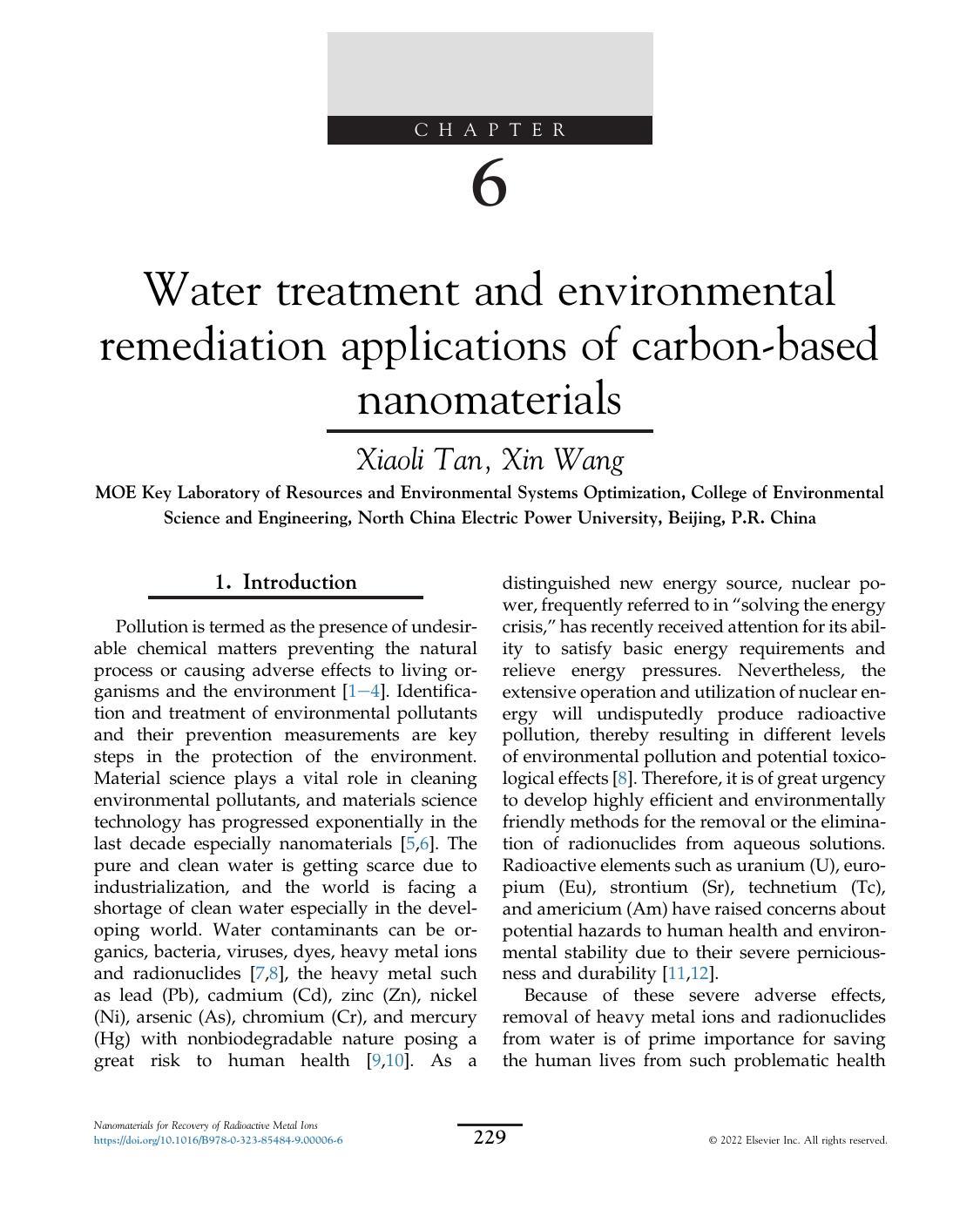
Download more ebook from https://ebookmass.com
More products digital (pdf, epub, mobi) instant download maybe you interests ...

Environmental Applications of Carbon NanomaterialsBased Devices 1st. Edition Shadpour Mallakpour
https://ebookmass.com/product/environmental-applications-ofcarbon-nanomaterials-based-devices-1st-edition-shadpourmallakpour/
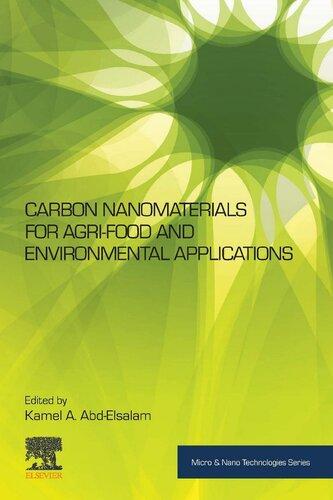
Carbon Nanomaterials for Agri-food and Environmental Applications 1st Edition Kamel A. Abd-Elsalam (Editor)
https://ebookmass.com/product/carbon-nanomaterials-for-agri-foodand-environmental-applications-1st-edition-kamel-a-abd-elsalameditor/
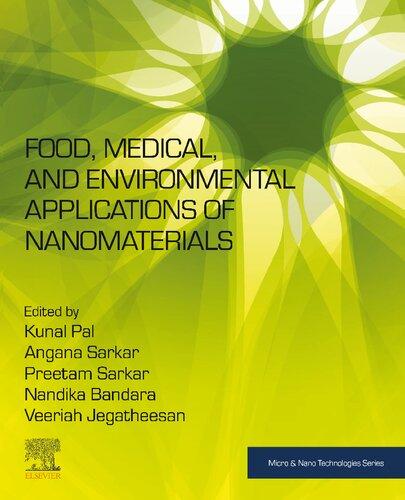
Food, Medical, and Environmental Applications of Nanomaterials Veeriah Jegatheesan
https://ebookmass.com/product/food-medical-and-environmentalapplications-of-nanomaterials-veeriah-jegatheesan/

Environmental Applications of Microbial Nanotechnology: Emerging Trends in Environmental Remediation Pardeep Singh
https://ebookmass.com/product/environmental-applications-ofmicrobial-nanotechnology-emerging-trends-in-environmentalremediation-pardeep-singh/

Nanomaterials for Sustainable Energy and Environmental Remediation (Materials Today) Dr. Mu. Naushad (Editor)
https://ebookmass.com/product/nanomaterials-for-sustainableenergy-and-environmental-remediation-materials-today-dr-munaushad-editor/
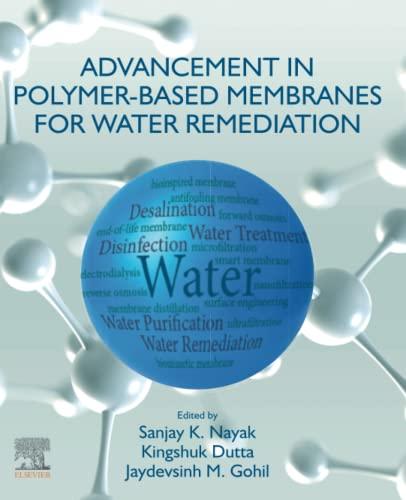
Advancement in Polymer-Based Membranes for Water Remediation Sanjay K. Nayak
https://ebookmass.com/product/advancement-in-polymer-basedmembranes-for-water-remediation-sanjay-k-nayak/
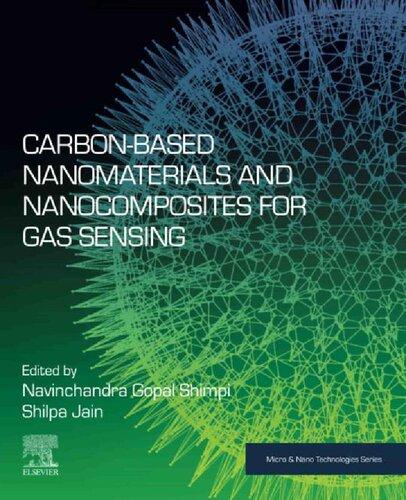
Carbon-Based
Nanomaterials and Nanocomposites for Gas Sensing Navinchandra Gopal Shimpi
https://ebookmass.com/product/carbon-based-nanomaterials-andnanocomposites-for-gas-sensing-navinchandra-gopal-shimpi/
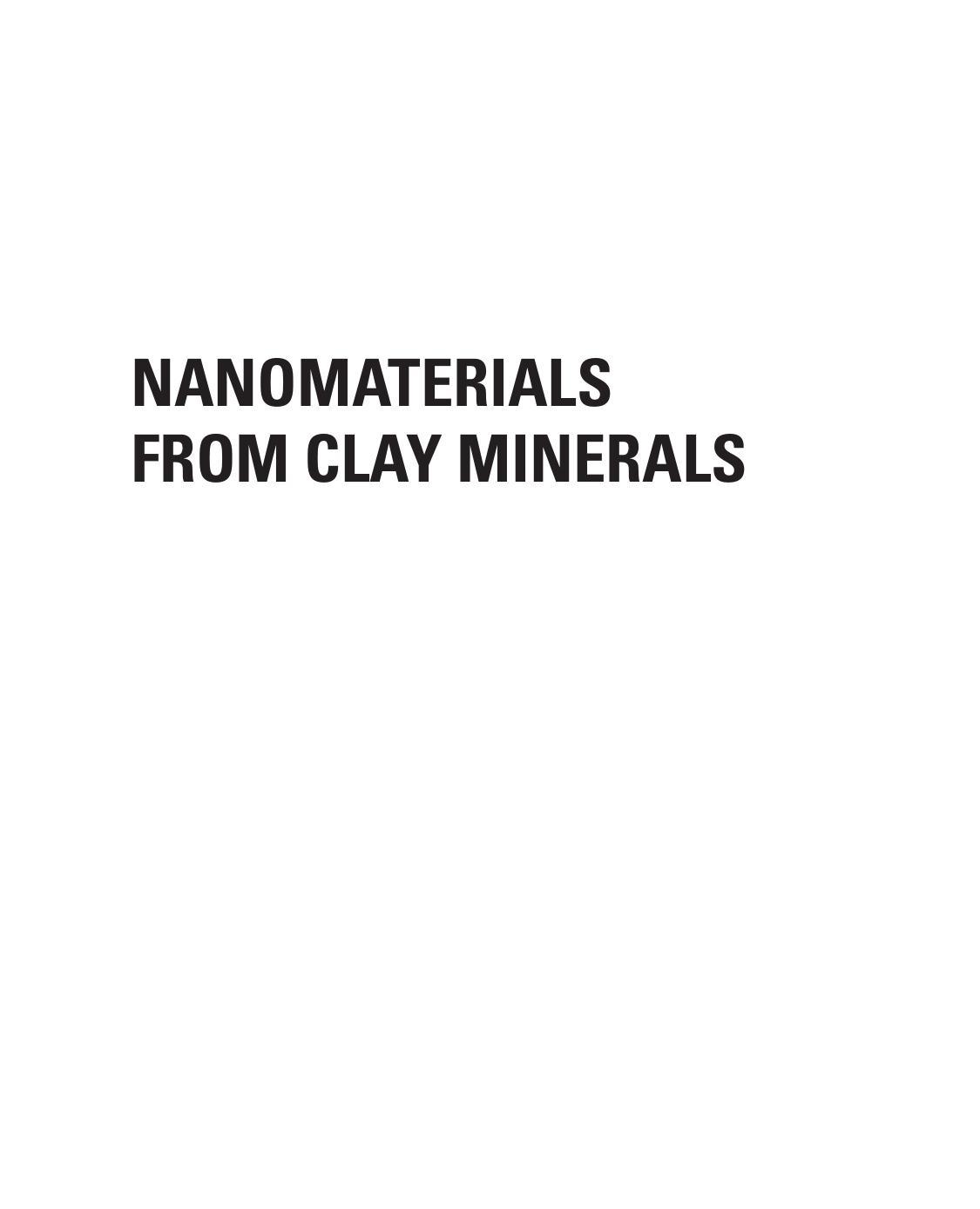
Nanomaterials from Clay Minerals Aiqin Wang And Wenbo Wang
https://ebookmass.com/product/nanomaterials-from-clay-mineralsaiqin-wang-and-wenbo-wang/
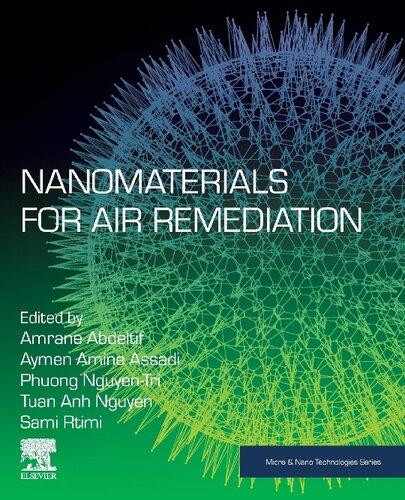
Nanomaterials for air remediation Abdeltif Amrane
https://ebookmass.com/product/nanomaterials-for-air-remediationabdeltif-amrane/
Watertreatmentandenvironmental remediationapplicationsofcarbon-based nanomaterials
XiaoliTan,XinWang
MOEKeyLaboratoryofResourcesandEnvironmentalSystemsOptimization,CollegeofEnvironmental ScienceandEngineering,NorthChinaElectricPowerUniversity,Beijing,P.R.China
1.Introduction
Pollutionistermedasthepresenceofundesirablechemicalmatterspreventingthenatural processorcausingadverseeffectstolivingorganismsandtheenvironment[1 4].Identi ficationandtreatmentofenvironmentalpollutants andtheirpreventionmeasurementsarekey stepsintheprotectionoftheenvironment. Materialscienceplaysavitalroleincleaning environmentalpollutants,andmaterialsscience technologyhasprogressedexponentiallyinthe lastdecadeespeciallynanomaterials[5,6].The pureandcleanwaterisgettingscarcedueto industrialization,andtheworldisfacinga shortageofcleanwaterespeciallyinthedevelopingworld.Watercontaminantscanbeorganics,bacteria,viruses,dyes,heavymetalions andradionuclides[7,8],theheavymetalsuch aslead(Pb),cadmium(Cd),zinc(Zn),nickel (Ni),arsenic(As),chromium(Cr),andmercury (Hg)withnonbiodegradablenatureposinga greatrisktohumanhealth[9,10].Asa
distinguishednewenergysource,nuclearpower,frequentlyreferredtoin “solvingtheenergy crisis,” hasrecentlyreceivedattentionforitsabilitytosatisfybasicenergyrequirementsand relieveenergypressures.Nevertheless,the extensiveoperationandutilizationofnuclearenergywillundisputedlyproduceradioactive pollution,therebyresultingindifferentlevels ofenvironmentalpollutionandpotentialtoxicologicaleffects[8].Therefore,itisofgreaturgency todevelophighlyefficientandenvironmentally friendlymethodsfortheremovalortheeliminationofradionuclidesfromaqueoussolutions. Radioactiveelementssuchasuranium(U),europium(Eu),strontium(Sr),technetium(Tc), andamericium(Am)haveraisedconcernsabout potentialhazardstohumanhealthandenvironmentalstabilityduetotheirsevereperniciousnessanddurability[11,12].
Becauseofthesesevereadverseeffects, removalofheavymetalionsandradionuclides fromwaterisofprimeimportanceforsaving thehumanlivesfromsuchproblematichealth
6.Watertreatmentandenvironmentalremediationapplicationsofcarbon-basednanomaterials
issues.Toxicmetalionscouldberemovedby numerousmethods,likeionexchange,reverse osmosis,precipitation filtration,biosorption, coagulation,andextraction[13 15].Adsorption isconsideredthebestmethodasitiscosteffective,highlyefficient,andeasytooperate forremovingtracelevelsofheavymetalions orradionuclides.Avarietyofmaterialshave beentestedasadsorbentsforwatercontaminationremediation.Commonlyusednanomaterialsforadsorptionofpollutantsaremetal oxides(Fe3O4,CuO,TiO2,etc.)[16,17],transition metalchalcogenides(NiS/Ni3S4,MoS2,ZnS, ZnSe,etc.)[18 21],transitionmetalcarbides andcarbonitrides(MXenes)[22],layereddouble hydroxides(LDHs)[23],magneticnanomaterials [24],polymernanocomposites[25]andcarbon nanomaterials,etc.[26].However,inthescientificcommunity,carbon-basednanomaterialsare gainingpopularityasnanosorbentsforwater treatmentduetotheirsizeandshapedependent properties,environmentallybenignnature,abundance,andeaseofhandling[17,27].Inthischapter,wewilltrytoreviewthelatestadvancement intheapplicationofcarbonnanomaterials, namelyactivatedcarbons(ACs),carbonnanotubes(CNTs),graphene,anditsderivatives includinggrapheneoxide(GO)andcarbonnanofibers(CNFs)inthepurificationofheavymetal andradionuclidesinion-contaminatedwater.
2.Propertiesofcarbon-based nanomaterials
2.1Activatedcarbon
ACisrecognizedasoneofthemostpopular andwidelyusedadsorbentinwaterandwastewatertreatmentthroughouttheworld[1,28]. ACisacommontermusedtodescribecarbonbasedmaterialswhichcontainswell-developed internalporestructure.ACisproducedfroma varietyofcarbonaceousrichmaterialssuchas wood,coal,ligniteandcoconutshell[29].The credittodevelopcommercialACgoestoaSwedishchemistvonOstreijkowhoobtainedtwo
patents,in1900and1901,oncoveringthebasic conceptsofchemicalandthermal(orphysical) activationofcarbon,withmetalchloridesand withcarbondioxideandsteam,respectively [30].Theprocessofchemicalactivationof sawdustwithzincchloridewascarriedoutfor the firsttimeinanAustrianplantatAussingin 1914onanindustrialscale,andinthedyeplant ofBayerin1915[31].Inthistypeofactivation, pyrolyticheatingofthecarbonaceousmaterial wasperformedinthepresenceofdehydrating chemicalssuchas,zincchlorideorphosphoric acid[32,33].Despitetheefficiencyofcommercial ACishigh,therehavebeensomedrawbackson itsusageowingtoitsexpensivenature[34]. Currentresearchconcentratesonproducing ACsusingreadilyavailableandcheapmaterials withhighcarboncontentandeasypreparation, likeplantwastes,agriculturalwastesandbyproductsfromindustries[35 37].Production ofadsorbentsusingsuchwasteproductsforwater/wastewatertreatmentwillhelpinreducing theexpensesthatmaybeincurredondisposing ofsuchwastes,andthegeneratingofACs.
Asacarbonaceousmaterial,ACisoftenproducedbypyrolysisofcellulose-basedsubstances orbituminouscoalathightemperatureinthe absenceofair.Highsurfacearea,porousstructure,andsurfacereactivityaresomeofthe importantcharacteristicsofACs[29].The adsorptioncapacityofACisdependentgreatly ontheactivationprocess.Thepurposeofthe activationstepistoimproveporosityandthe combustionofthetarspresentduringcarbonization[38].Theprocessesofactivationarebased onthereactionofvariouscomponentsthat makeupthecarbonstructureandcanbecategorizedintophysical,chemical,andphysical/ chemicalactivation.The firststepoftheprocess involvesremovalofthetarswhichcausepore blockage.Thishelpstoeasethecontactbetween thesurfaceofthecarbonandtheactivation agent.Thisisfollowedbythesecondstepin whichsmallcrystalsofcarbonarecombusted. Inthethirdphase,theoxidationofthecarbon particlestakesplace[39].
Physicaltypeofactivationisalsocalledthermalactivationandisdonebyoxidizingprecursorwiththehelpofactivatingagentusually withinthetemperaturerangesof800 1100 C toobtainparticularcompositionofAC[40]. Thephysicalactivationprocessconsistsoftwo phases[40];the firstphaseentailstheburning oftheprecursors,whileatthesecondphase,activationiscarriedoutusingactivatingagentssuch assteam,orcarbondioxide[41,42].Thevolatile mattersinthecharareexcludedwhichbrings abouttheobservationoftheporoustextureof theACs.Theparamountaimofgasificationis toincreasethepores.Nevertheless,thetemperaturemustbesetwithcaution.Atadecreased temperature,reactionstakeplaceinsidethecarbonsurfaceduringtheinitialstate.Whileat increasedtemperature,thereactionsbecome controlledbydiffusionoutsidethecarbonparticles[39].TheACsyieldproducedduringphysicalactivationisabitlow,whichlimitsitsusage. Chemicaltypeofactivation,thematerialsare subjectedtoactivationaswellascarbonization. Theprecursorsareinjectedwithacertainquantityofactivatingagents.Theactivatingagents usuallyusedarepotassiumcarbonate,zinc
chloride,potassiumhydroxide,calciumcarbonate,sodiumhydroxide,andphosphoricacid, etc.[32,33,43],asshownin Fig.6.1.Thechemical activationprocessisnormallycarriedoutata lowertemperature,unlikethephysicalactivationprocess.Thecarboncontentobtainedfrom chemicalactivationisrelativelyhigherthanthe quantityobtainedduringthephysicalactivation process.Butitrequiresfurtherwashingto removethechemicalwhichlimitsitsapplication [44,45].Severalkindsofresearchcarriedoutby previousauthorsfocusedonthephysicalor chemicaltypeofactivationprocess.ACsobtainedfromeitherofthesetwomethodspossess microporesorareofalowsurfacearea[46,47]. Hence,acombinationofbothphysicalaswell aschemicaltypesofactivationisnecessary.Khalilietal.opinedthatwithphysicalandchemical activationprocesses,thereisalikelihoodofgettingACwithdistinctsurfacecharacteristics.ACs withhighsurfaceareaaredeemedimportantin solvingenvironmentalissues.Forphysicalor chemicalactivationprocesstotakeplace, burningofthebiomassisdoneandfollowed byactivationwithphysicalandchemicalactivatingagents[48].Inaddition,therearemany
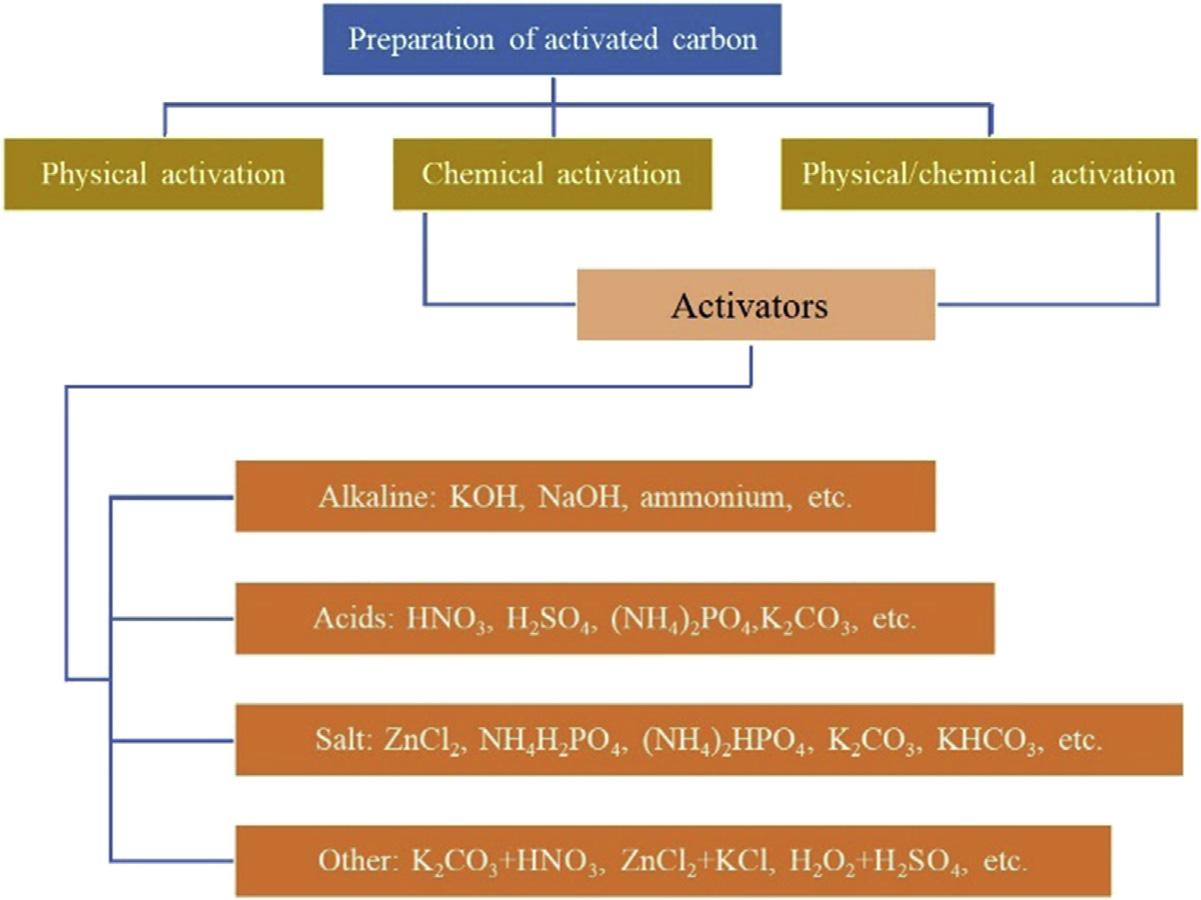
6.Watertreatmentandenvironmentalremediationapplicationsofcarbon-basednanomaterials
researcherstoloadmetaloxideorfunctional compoundsonthesurfaceoftheACs[49,50].
ThestructureofACsishighlycomplexand dependsontherawmaterialusedtoproduce it,themethodofproduction,andpretreatment procedure.ACissometimesdescribedashavinga “ crumpled ” layeredsurface,inwhich fl atsheetsarebrokenandcurvedbackupon themselves.Itgenerallyconsistsofsmall graphitecrystalliteswithhighlydisordered, irregular,rough,andheterogeneoussurfaces [51 ].ThesurfaceareaofACscanrangefrom 500to1400m 2 g 1 ,withvaluesashighas 2636m 2 g 1 [ 29 ,52 ].TheporosityofACcanbe increasedbypretreatmentwithacidsorbases thatcausesreorganizationoftheirsurfaceand pores[ 29].Theporousstructuralcharacteristics ofACareclearlyshownbySEMimagesofcoconutshellACsobtainedatdifferentH 3 PO4 impregnationratios( Fig.6.2 ).TheACprepared
athighimpregnationratiodisplayedporeswith largeporesize.Thiswasunderstandable.As theimpregnationratioincreased,moreH3 PO 4 couldbeembeddedintothecarbonmatrix andparticipateinthecarbongasi fi cationreactions[ 53].Togetaninsightintotheeffectof temperatureontheporosity,AChoneycomb monolith(ACH)waspreparedfrombituminouscoal.Ahighercarbonizationtemperature resultingincharsmoreresistanttosteamactivation,andyieldingACHwithlesstotal-pore volume,higherpercentageofmicroporevolume,andhighermechanicalstrength.Alonger steamactivationtimeresultedintheconversion ofahigherproportionofmicroporestomesopores[ 54 ].
ThechemicalcharacteristicsofACsare largelydeterminedbyacertaindegreeofsurface chemicalheterogeneity,whichisrelatedtothe presenceofheteroatoms,i.e.,atomspresentin
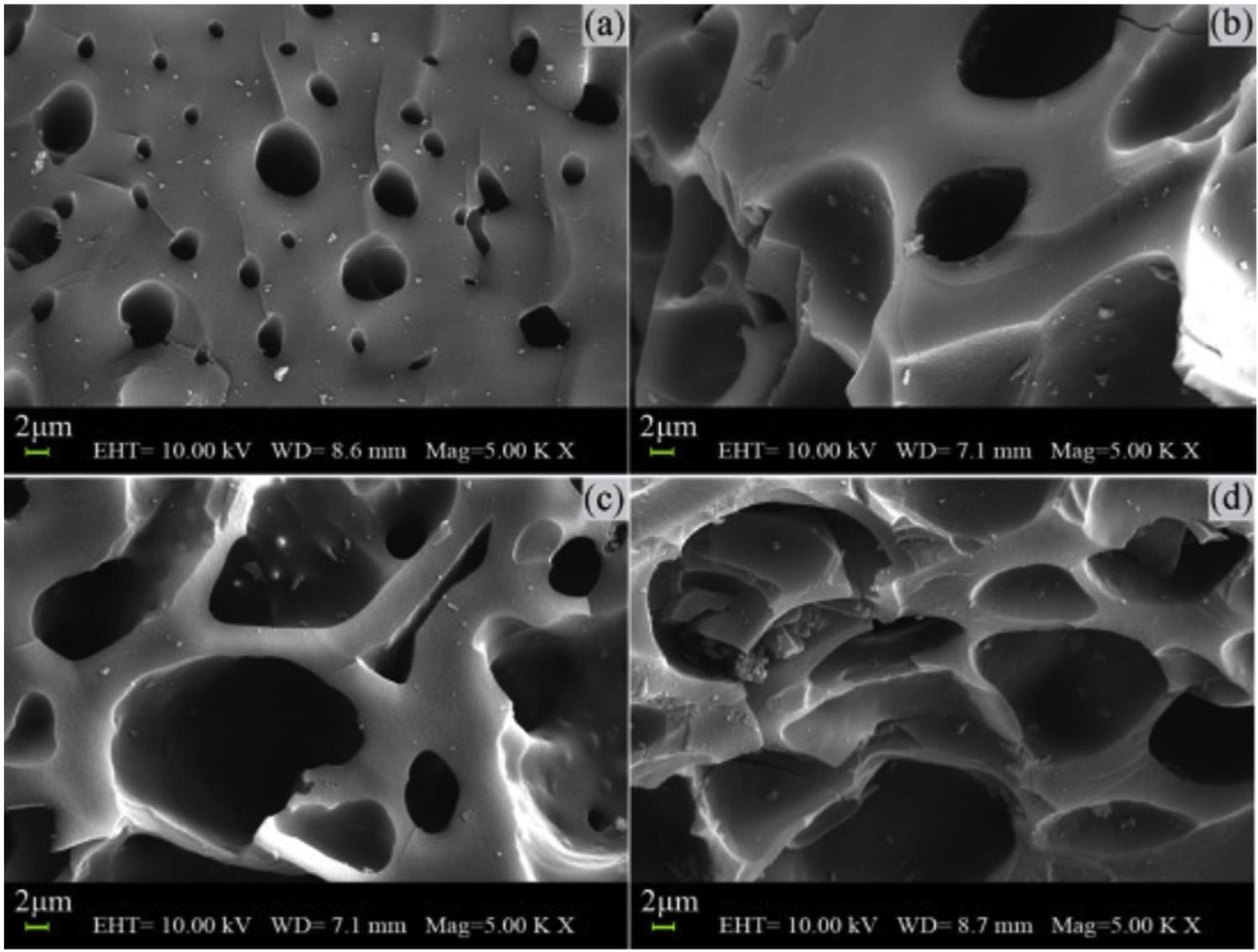
FIGURE6.2 SEMimagesof(A)AC-S-1-CO2,(B)AC-S-2-CO2,(C)AC-S-3-CO2,and(D)AC-S-4-CO2 (theas-obtainedAC wasnamedAC-S-X-CO2,whereX(¼1,2,3,or4)referredtotheH3PO4/precursorimpregnationratiousedtopreparethe sample)[53].
thecarbonstructurethatarenotonlycarbon, suchasoxygen,nitrogen,hydrogen,sulfur,and phosphorus,whicharederivedeitherfromthe natureofstartingmaterialorintroducedduring theactivationprocess[55].Surfacefunctional groups(whichareformedfromtheseheteroatoms)andthedelocalizedelectronsofthecarbonstructuredeterminetheacidicorbasic characteroftheACsurface[56].
Theacidic/basiccharacterofACsurfacesis closelyrelatedtotheoxygen-containingsurface groups[57,58].Thesegroupswhicharemainly presentontheoutersurfaceoredgeofthebasal planecontributetowardthechemicalnatureof thecarbon.Astheseoutersitesconstitutethemajoritiesoftheadsorptionsurface,theconcentrationofoxygenonthesurfacehasagreatimpact ontheadsorptioncapabilitiesofAC[59].Some examplesofoxygen-containingfunctionalities detectedonthecarbonsurfaceincludethe following:carboxylic,lactone,phenol,carbonyl, pyrone,chromene,quinone,andethergroups (Fig.6.3A).Functionalgroupssuchascarboxylic acid,lactone,andphenolichydroxylhavebeen postulatedasthesourcesofsurfaceacidity[62]. Oxygen-containingfunctionalgroupsarecreated whenthecarbonsurfaceisoxidized[43,63,64]. Theactivationmethodscommonlyusedtointroduceoxygen-containingacidicgroupsareoxidationbygasesandwetoxidants.Carbondioxide andsteamcanbeusedinthegasphasetreatment. ACsshownahighdegreeofaromaticitywiththe presenceofoxygenfunctionalgroups(carboxylates,lactonesandphenols)onitssurface[64]. Wetoxidationscanintroduceahigheramount ofoxygenintothecarbonsurfaceatmuchlower temperaturescomparedwiththegasphase treatment.HNO3 modificationgeneratesasignificantlylargenumberofsurfacefunctionalgroups suchascarbonyl,carboxyl,andnitrategroups. NaOHcausesanincreaseinthecontentof hydroxylgroups.TheHCltreatmentresultsin anincreaseinthevolumeofsingle-bondedoxygenfunctionalgroupssuchasphenols,ethers, andlactones[43].Ithasbeendemonstratedthat oxidationofACinthegasphaseincreasesmainly theconcentrationofhydroxylandcarbonyl
surfacegroups,whileoxidationintheliquid phasecanincorporateahigheramountofoxygen intheformofcarboxylicandphenolichydroxyl groupsontothecarbonsurfaceatmuchlower temperaturescomparedwiththegasphase oxidation[65].
BasicityofACscanbeassociatedwith: (I)resonating p-electronsofcarbonaromatic ringsthatattractprotons,and(II)basicsurface functionalities(e.g.,nitrogen-containinggroups) capableofbindingwithprotons[60,66].It wasproposedthatcertainoxygen-containing surfacefunctionalitiessuchaschromene,ketone, andpyronecancontributetothecarbonbasicity (Fig.6.3A).However,thebasiccharacterofACs arisesprimarilyfromdelocalized p-electronsof graphenelayers.Itwaspointedoutthatthe p-electronsoftheselayerscouldactasLewisbases.Someresearchersstudiedthecontributionof basalplanestothecarbonbasicity[67,68].The surfacebasicityoftwoseriescarbonswasstudied,whereoxygen-freecarbonsitescanadsorb protonsfromsolution.Thesesitesarelocated in p-electronrichregionsonthebasalplaneof carboncrystallites.Therefore,basicsitesare Lewis-typeassociatedwiththecarbonstructure itself[65].Ithasbeenshownthatintroduction ofnitrogenfunctionalgroupsintothecarbon surfacecanincreasethecapacityofACsto adsorbUO2 2þ [69].Nitrogen-containingfunctionalitiescanbeintroducedthrougheitherreaction withnitrogen-containingreagents(suchasNH3, nitricacid,andamines)oractivationwith nitrogen-containingprecursors(Fig.6.3B) [70,71].Possiblestructuresofthenitrogenfunctionalitiesincludethefollowing:amidegroup, imidegroup,lactamgroup,pyrrolicgroup, andpyridinicgroup.Nitrogenfunctionalities generallyprovidebasicproperty,whichcan enhancetheinteractionbetweencarbonsurface andacidmoleculessuchas,dipole-dipole,Hbonding,covalentbonding,andsoon[61].
2.2Graphene
Graphene,anallotropeofcarbon,hastriggeredanew “goldrush” sinceitsdiscoveryby

FIGURE6.3 Proposedacidicandbasicoxygenfunctionalitiesoncarbonsurfaces(left)[60];Typesofnitrogensurfacefunctionalgroups(right): (A)pyrrole,(B)primaryamine,(C)secondaryamine,(D)pyridine,(E)imine,(F)tertiaryamine,(G)nitro,(H)nitroso,(I)amide,(J)pyridone, (K)pyridine-N-oxide,(L)quaternarynitrogen[61].
NovoselovandGeim[72,73].Asthe firsttwodimensional(2D)atomiccrystalhasattracted greatattentioninthescientificcommunity[74]. Idealgrapheneisasinglelayerofsp2-hybridized carbonatomsjoinedbycovalentbonds.Because ofthedifficultyinisolatingsinglelayersofgraphene, “few-layer” graphene(2 5layers),multilayergraphene(2 10layers)andgraphite nanoplates(2Dgraphitematerialwithathicknessand/orlateraldimensionlessthan 100nm)areallconsideredgraphene-family nanomaterials[75].Now,graphenehasbeenin thelimelightforsometimeandmanyresearchershavebeenworkingongraphenesynthesis;thus,severalmethodshavebeen reportedfortheexfoliationofgraphiteintographene[76,77].Theycanbedividedintotwo maincategories:top-downapproach(mechanicalexfoliation(scotchtape);graphiteintercalation;nanotubeslicing;pyrolysismethod; reductionofgraphiteoxide;electrochemical exfoliation;sonication;ballmilling;radiation basedmethods)andbottom-upapproach
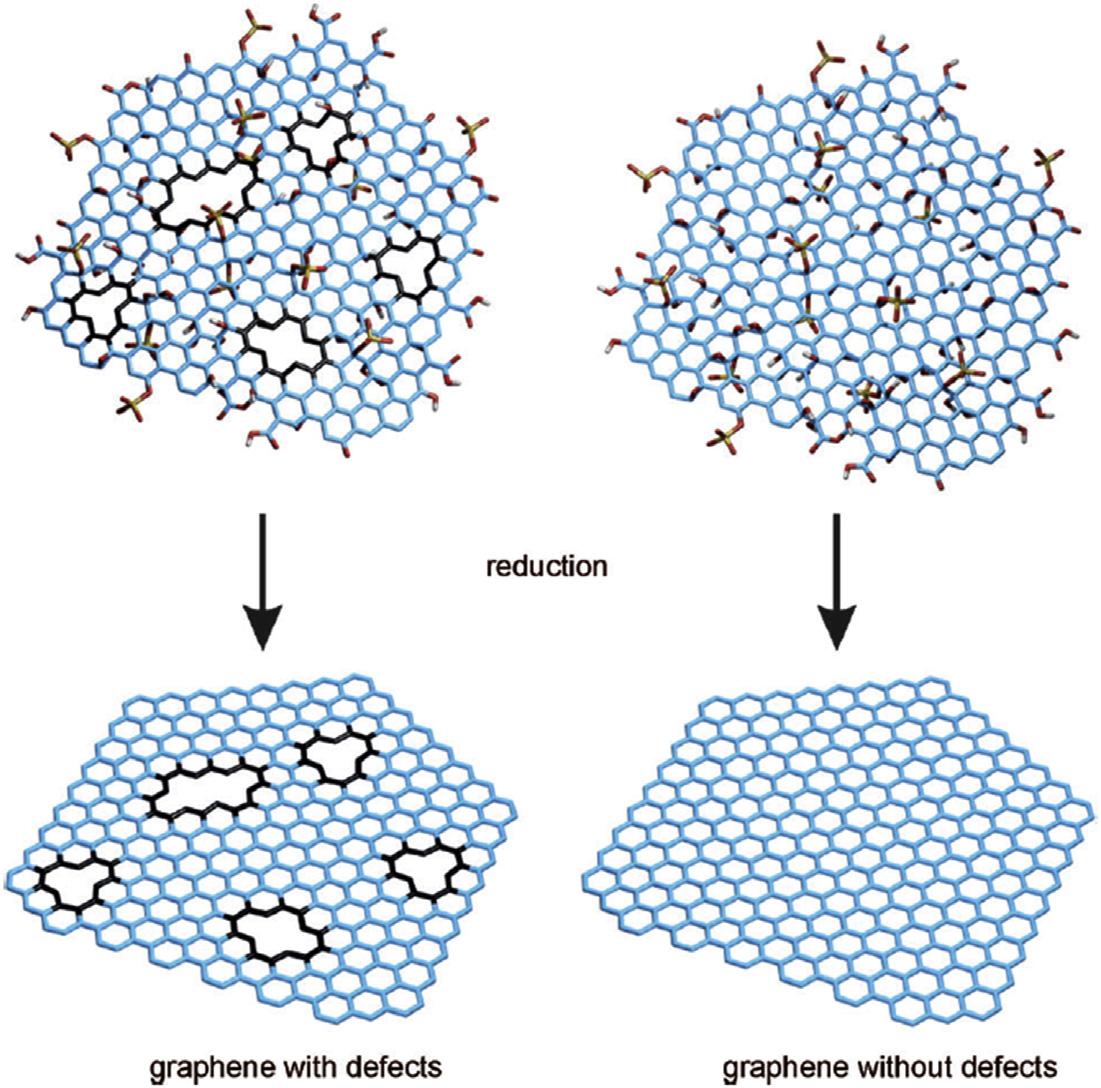
(growthfrommetal-carbonmelts;epitaxial growthonsiliconcarbide(SiC);dryicemethod; deposition)[76,77].Atpresent,thedominant typeofgrapheneusedinadsorptionapplication ispreparedviatheGOroute(Fig.6.4)notonly becauseofitspotentialforlarge-scaleproduction,butalsobecauseitproducesafunctional formofgraphenethatisattractiveforadsorption applications[79].GOisanintermediateproduct duringsynthesisofreducedgrapheneoxide (RGO)andpreparedbyoxidativeexfoliationof graphite[78].GOisconsideredtheoxidized formofgraphene,functionalizedbyarangeof reactiveoxygenousfunctionalgroups,resulting inextendedgraphenesheetsdecoratedwith epoxyandhydroxylfunctionalgroupsinthe basalplanesandcarboxylicacidgroupsatthe edges,andtheoxygenousfunctionalgroupson GOmakeasignificantcontributiontoitshydrophilicityandhighnegativechargedensity, whichisimportantfortheheavymetaladsorption[80].Therefore,wemainlyintroducethe propertiesofGOandRGO. FIGURE6.4
6.Watertreatmentandenvironmentalremediationapplicationsofcarbon-basednanomaterials
GOisconventionallypreparedbychemical oxidationandsubsequentexfoliationofpristine graphitewitheithertheBrodie,Staudenmaier, Hofmann,orHummers’ methods,orsomevariationsofthesemethods.In1859,Brodie firstfound thatonlygraphitizablecarbonscontainingregionsofgraphiticstructurecouldbeoxidizedto generategraphiteoxidebypotassiumperchlorate andconcentrationnitricacidmixture[81].Then, Staudenmaierheatedthemixtureofgraphite,sulfuricacid,nitricacidandpotassiumperchlorate, andpreparedgraphiteoxidein1898[82].In 1937,Hofmannetal.[83]usedconcentratedsulfuricacidincombinationwithconcentratednitric acidandKClO3 fortheoxidationofgraphitefor thepreparationofgraphiteoxide.In1958,a convenientmethodwasintroducedtoprepared graphiteoxidewithconcentrationsulfuricacid, sodiumnitrateandpotassiumpermanganateby HummersandOffeman[84].Atpresent,there alsohadimprovedormodifiedHummers method[85,86].Allthesemethodschemically oxidizedgraphitetovariouslevels,andtheinterlayerdistanceofgraphiteoxideincreasedfrom 0.34nmto0.8 1.0nmduetotheintercalation ofoxygenousfunctionalgroups[87,88].Theincreaseininterlayerdistancecouldweakenthe vanderWaalsforcesbetweentheadjacent graphiticlayersandisbeneficialtotheexfoliation ofgraphiteoxidetoobtainGOviaultrasonic methodormechanicalstirring[89].TheconcentrationofexfoliatedGOinorganicsolventscould beupto1mgmL 1,whilethatinwatercould reachto7mgmL 1 duetothehydrophilicoxygenousfunctionalgroupsonthesurface[85]. ThereductionofGOtographenehasbeen approachedbyavarietyofmethods[90].The
simplestwayisthermalannealing,whichcauses disproportionationofGOintoCO2 andgraphene. Althoughthismethodisattractiveduetoits simplicity,perfectgrapheneisnotobtained, evenattemperaturesupto1100 C[91].Instead, arupturedcarbonframeworkisobtainedthat containsholedefectsfunctionalizedwithoxygen functionalities,suchascarbonylgroupsorethers. Temperatureshigherthan1500 Carerequired forthecompletedeoxygenationofGO,which causesreorganizationofthecarbonframework [92].Suchconditionsarenotfavorabledueto thehighenergycostortheincompatibilitywith temperature-sensitivesubstrates.Chemical reductionofgraphiteoxideisoneoftheexcellent procedurestosynthesizedRGO/graphenein largequantities.TheGOisreducedbyasuitable chemicalprocess;thereducedGOformedresemblesgraphenebutcontainsresidualoxygenand otherheteroatoms,aswellasstructuraldefects [86].Variousinorganicandorganicreducing agentssuchasphenylhydrazine[93],hydrazine hydrate[94],sodiumborohydride[95],ascorbic acid[96],hydroxylamine[97],hydroquinone [98],etc.[86]havebeenexploredforthechemical reductionofGO.Duringthereductionprocesses, mostoxygen-containingfunctionalgroupsofGO areeliminatedandthe p-electronconjugation withinthearomaticsystemofgraphiteispartially restored.Finally,theRGOgetsprecipitatedfrom thereactionmediumbecauseoftherecovered graphitedomainsofchemicallyconvertedgraphenesheetswithincreasedhydrophobicityand p-stackinginteraction[86].Themostwidely appliedtechniqueusedforpreparingchemically convertedreducedGOisthechemicalreduction ofGOasshownin Fig.6.5.

FIGURE6.5 SynthesisprocessofGOandRGOfromthepristinegraphite.
GOisamonolayergraphiteoxide,the2DGO exhibitsatypicallywrinkledandsheet-likestructure,asshownin Fig.6.6A.Thetypicalthickness ofthepreparedmonolayerGOsheets(Fig.6.6B) isabout0.7 1.2nm,whichismuchlargerthan thatoftheidealgraphene(0.335nm)duetothe existenceofepoxy,carboxylandhydroxylgroups onbothsidesoftheGOsheet[102,103].ComparisonwiththeX-raydiffractionofGOandRGO (Fig.6.6C),atypicalbroadpeaknear10.21 degrees(d-spacing~8.67A)canbeobservedfor
theGOpowder.ThepeakofRGOshows anobviousshifttohigher2q angles(25.04degrees;d-spacing~3.56A),suggestingthatRGO waswellorderedwith2Dsheetswithmorethoroughremovalofsurfacefunctionalgroups[101]. X-rayphotoemissionspectroscopy(XPS)in Fig.6.6D showstheC1spectraofgraphite,GO andRGOpowdersamples.Ingeneral,theRGO exhibitsthesimilarXPSspectrumtothatofthe naturalgraphite,C]Cbondsdominate,as shownbyonesinglepeakwithsmalltailsatthe
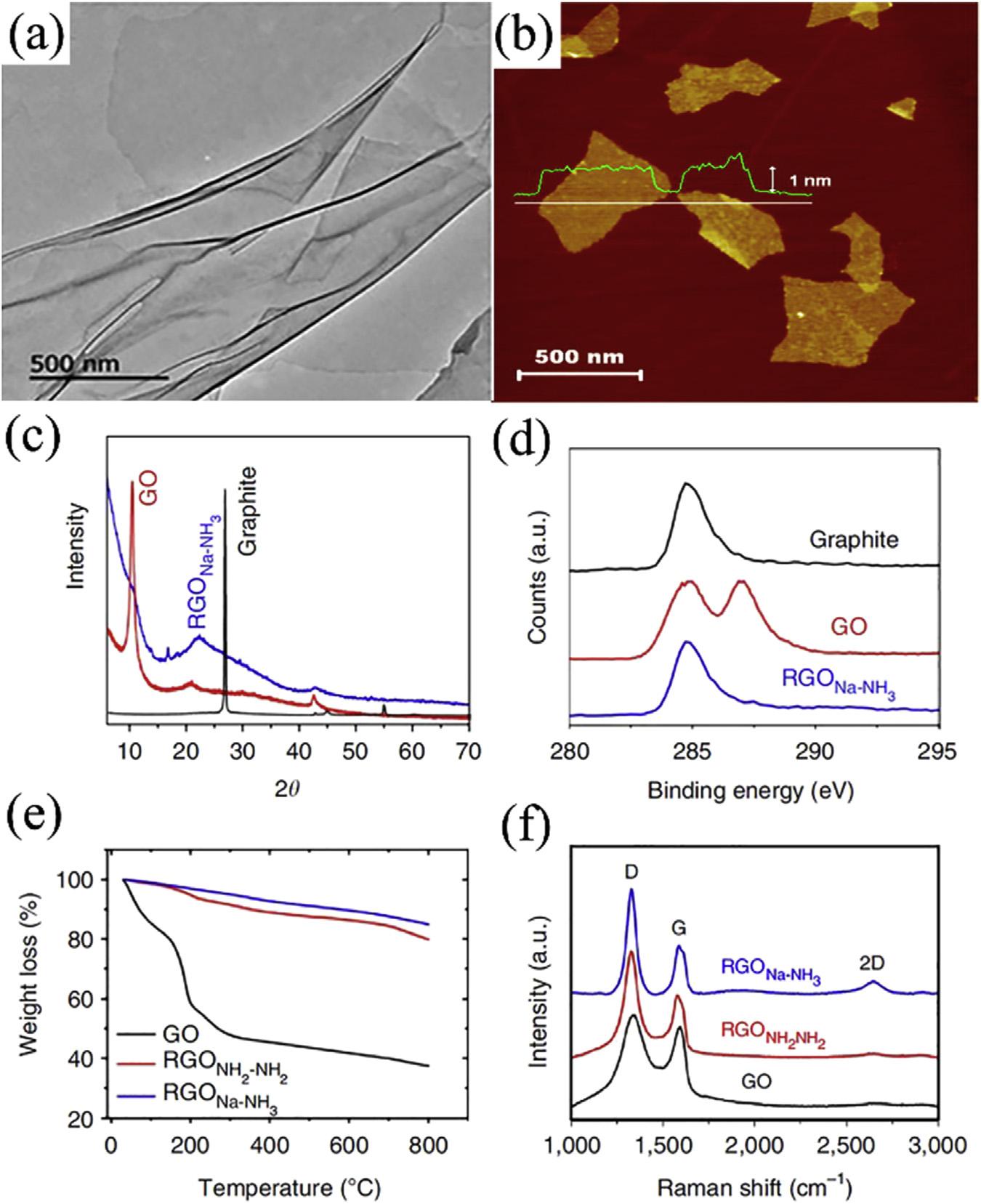
FIGURE6.6 (A)TEMimageofGO[99];(B)hydrazine-reducedgrapheneoxidesheets[100];(C)X-raydiffraction(XRD) patternsofgraphite,GOandRGOpowder;(D)XPSspectraofgraphite,GOandRGO;(E)TGAthermogramsforGOand RGO;(F)RamanspectraofGO,RGONH2 NH2 andRGONa NH3 powder[101].
6.Watertreatmentandenvironmentalremediationapplicationsofcarbon-basednanomaterials
higher-bindingenergyregion,confirmingthe goodrestorationofC]CbondsintheRGO.In contrast,theoriginalGOsignalshowstwoseparatedpeaksbecauseofthehighpercentageofoxygenfunctionalities,whichcontainedtheC C/ C]Cinthearomaticrings,theC Oofepoxy andalkoxygroupsandC]O/O C]Ogroups [101,104].Thermogravimetricanalysis(TGA) wasusedtofurtherassessthelevelofreduction inGOplatelets(Fig.6.6E).TheGOsample showedsignificantweightlosswithanonsettemperatureatslightly >10 C,whichisattributedto theeliminationofinterlamellarwater,followed bylossofoxygenfromtheGOplateletsthemselvesatslightlyhighertemperatures.RGO showedmuchhigherthermalstabilitybecause ofthemorecompletede-oxygenationandbetter graphitizationwithenhancedvanderWaals forcesbetweenlayers[93].Ramanspectroscopy providesanondestructivemethodforcharacterizinggraphene.Graphenetypicallyexhibitsthree mainRamanfeatures,G-band,D-bandand two-dimensionalmodes,eachhavingdifferent physicalorigins.RamanspectraofGOand RGOpowderareshownin Fig.6.6F.TheRaman spectrumofGOandRGOexhibitedtwointense peaksat1328and1595cm 1,whichcorrespond totheDandGbands,respectively.Theratioof
I(D)/I(G)oftheRGOincreasedwhencompared withGO,indicatingthatnumeroussmallsp2 domainswereformedduringthereduction[93,101].
2.3Carbonnanotubes
Afterthediscoveryofbuckyball(aball-like moleculemadeofpurecarbonatoms)in1985 byKrotoetal.[105],atubularformofcarbon wasreportedbyIijimain1991andnamedcarbonnanotubes(CNTs)[106].CNTshavehollow, one-dimensional(1-D)tubelikestructures,with thincarbonwalls,whichbringfascinatingmechanical,electrical,andthermalproperties [107].CNTshavenano-sizeddiameterswith highaspectratios.Theycanbethoughtofasgraphenenanosheetsrolledintocylindricaltubes, andcanbecategorizedassingle-walledCNTs (SWCNTs)andmulti-walledCNTs(MWCNTs) (Fig.6.7)[109].TheuniquestructureofCNTsoffersexcellentintrinsicproperties,includinga largeactivesurfacearea,highchemicalandmechanicalstabilities,andhighelectricalconductivity,whichprovidesimmensepotentialforuseas sensorsandelectronicsforbiomedicalapplications,ascomposites,andforadsorption[110]. Thehighsurfaceareaandporosity,thehollow, layeredarchitecture,smalldiameter,andhigh
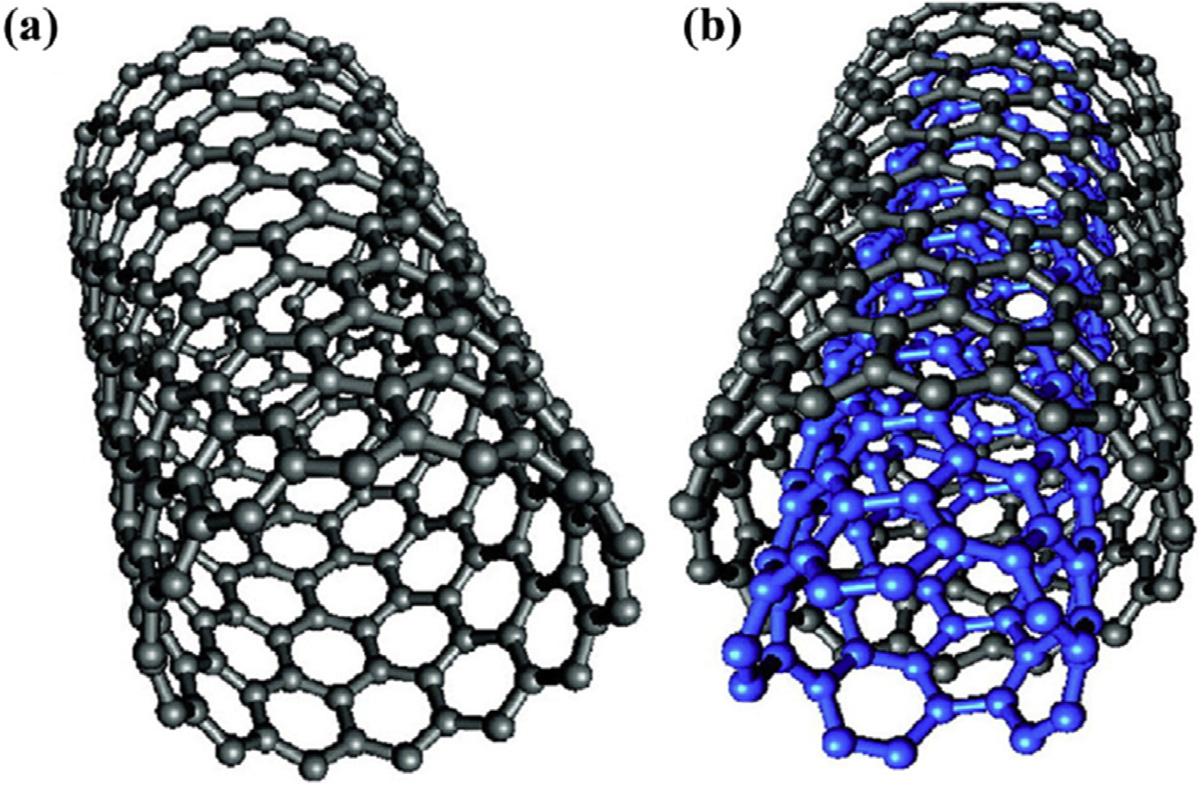
FIGURE6.7 structurerepresentationof(A)SWCNTsand(B)MWCNTs[108].
aspectratioofCNTsmakethemeffectivefor pollutantadsorption,andtheyarewidely employedtoadsorbwatercontaminants[10].
Therearemainlyaboutthreemethodstoproducecarbonnanotube.
Arc-dischargeistheeasiestandmostcommon methodofproducingCNTs.Inthismethod, CNTsareformedbycreatingahotplasma dischargebetweentwographiteelectrodes whichareconnectedtothepowersupply(100 A;20V)inthepresenceofhelium(He)gas (Fig.6.8A).AccordingtotheEbbesenand Ajayan[113],asthepressureofHeinthechamberincreaseduptoacertainvalue,theyieldof nanotubesalsoincreases,butafterthatvalue, furtherincreaseinHepressureleadstothefall inCNTyields.Betterqualityofthenanotubes dependsupontheloweringofthecurrent [114].Variousgaseslike,N2,CF4 wereusedin placeofHegas[115,116].Shimotanietal.[117] reportedtheincreasedyieldofnanotubeswith theuseoforganicvapors.
Laser-ablation,at firstSmalleyandhiscolleaguesreportedthesynthesisofsingle-walled nanotubeswiththismethodin1995[118].
FIGURE6.8 (A)arc-discharge[111];(B)Laser-ablation[112];(C)Chemicalvapordeposition. 2.Propertiesofcarbon-basednanomaterials
Inthismethod,thecarbonsource(graphite)is dopedwithsmallamountsofmetalliccatalyst (CoandNi)whichisthenvaporizedwiththe helpofpulsedlaserbeaminthepresenceofinert gas(typicallyargon)atveryhightemperatures (approximately1200 C)andataconstantpressureof500Torr.AstheNd:YAGlaserbeamimpregnatesthetargetmaterial,itstartsvaporizing andcondensesontheotherendwhichisat comparativelylowertemperature(Fig.6.8B). Someresearchersuseddoublepulsedlasertoincreasethevaporizationwhichalsoincreasedthe yieldofsingle-wallednanotubesupto1gday 1 [107,119].Duetotherequirementofhigh-power usageandemployabilityofexpensivelasers,this synthesisrouteisaverycostlyaffair.
Thechemicalvapordeposition(CVD)method isusedforbulkproductionandcontrolled growthofnanotubes[120].Inthismethod,as shownin Fig.6.8C,synthesisofCNTstakeplace duetodecompositionofamixtureofhydrocarbongases(methane,ethylene,etc.)orvolatile carboncompoundspresentinthechamber ontoametallicsubstrate,wheremetallicnanoparticlesbehaveascatalystandnucleationsites
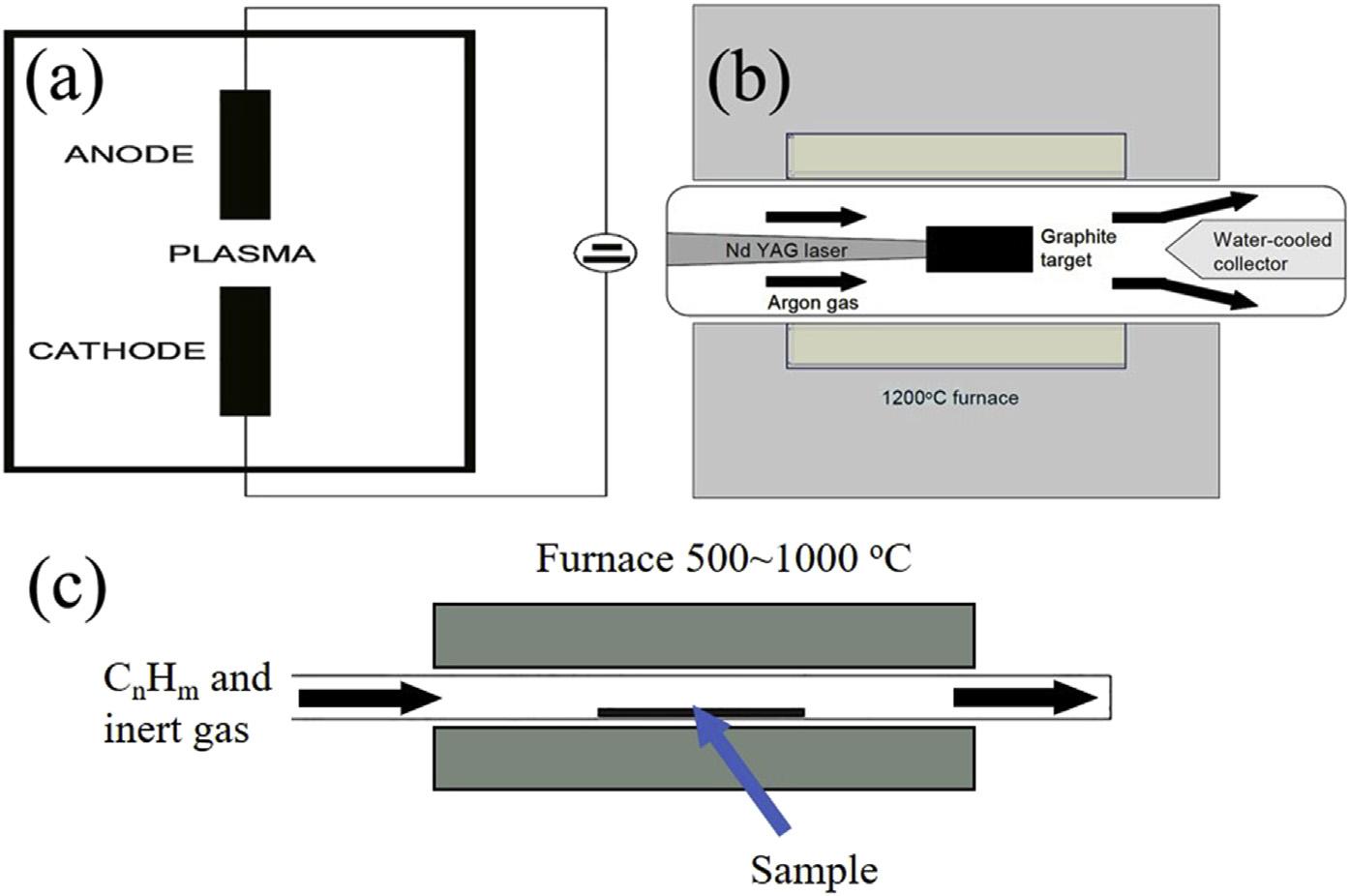
6.Watertreatmentandenvironmentalremediationapplicationsofcarbon-basednanomaterials
inthegrowthprocessofcarbonnanotubesat temperaturesof500 1000 Candunderatmosphericpressure.Theselectionofcatalystand preparationofsubstratedecidesthetypeand qualityofthenanotubesproduced.Usually,Fe, Co,Ninanoparticlesareusedascatalyst[121]. Poroussiliconisconsideredanidealsubstrate forcontrolledgrowthofcarbonnanotubes.In 2002,GovindarajandRao[122]usedorganometalliccompoundsinplaceofhydrocarbongasfor thesynthesisofCNTs.Themainadvantageof usingorganometalliccompoundsisthatthere isnorequirementoftheremovalofthecatalyst supportafterthereactionduetothepresence ofsamephaseofcarbonsourceandcatalyst simultaneously.Furthermodificationswere doneinthistechniquelater.Plasma-enhanced CVD(PECVD)isthewidelyusedmethodfor CNTsynthesis.Thistechniquewas firstused byRenetal.[123]in1998.Inthisprocessalso, adirectcurrentplasmaisusedwhichisresponsibleforthealignmentofthecarbonnanotubes. Thistechniqueisbasicallyusedinthefabrication ofCNT-based flatpaneldisplays,solarcellsetc. Similarly,anumberofstudieshavebeendoneto synthesizeCNTsbyvariousothertypesofCVD methods[124,125].
Ingeneral,CNTsarecategorizedintothree typesbasedonthetwo-dimensionalformof theirsheets:zigzag,armchairandchiralnanotubes(Fig.6.9).Thezigzagtypicallyhasahexagonalpatternmovingaroundthebodyofthe tubule.Thearmchairformcontainsoneortwo cyclohexaneconformers,withthecarbonatom alsodescribingahexagonalpatternasitmoves aroundthebodyofthetubulebody.Thethird formofCNTsisthechiralform.Thetermchiral denotes ‘handedness,’ andindicatesthatthe tubecanbetwistedinanydirection.Thechiral shapeofSWCNTsissimilartothezigzagand armchairforms.Allthesetypesusuallyoccur withinSWCNTs[126].
SWCNTsconsistofsheetsofsp2-hybridized carbon(graphenesheets)rolledintocylinders withdiametersrangingfrom6to~20Å (Fig.6.10A),dependingontheparticularmethod
andconditionsduringtheirsynthesis.Lengths typicallyrangeinthehundredsofnanometers ormicrometers[128].Thecontactsurfaceof SWCNTswithpollutantsismorethanMWCNTs becauseSWCNTsconsistofasinglecylindrical layer.However,SWCNTsasasorbentareused lessthanMWCNTsforremovingcontaminants becauseitssynthesisismoredifficultandmore expensivethanMWCNTs[126].
MWCNTscontainagroupofagraphenecylindersnestedtogether(Fig.6.10B).ATEMexaminationrevealsanintershellspacingofbetween 0.335and0.34nm,supplementingadiminishing tubediameter.Thesmallestdiameterandlargest spacingarefoundinthehighcover,subsequent inanunwelcomeforce,andassociatedtothe decreasingdiameterintheCNTsshell.The bulkgraphitecrystalspacingvalueof0.34nm isnearlyaslargeasthatoftheCNTsthemselves [126].Ru[129]establishedthattheinterlayer spacingmeanvalueis0.3444 0.001nm,and thatCNTsarelargerbyafewpercentthan bulkgraphitecrystal.Thereisaspacingbetween thelayers,denotedbyd ¼ 3.39Å,whichisbased ontheoreticalcomputationandisgreaterthan thatobservedforgraphite.UsingaTEMimage experimentally,MWCNTswerefoundtohave aspacingofd ¼ 3.4Å[113].ThismagicalCNT structureresultsinawesomechemicalandphysicalproperties.Becauseofthebondbetweenthe carbonatomsinthesp2 direction,CNTsareone ofthestrongestmaterialsintheworld[130]. ConcludedthatCNTshaveastrengthand Young’smodulus10 100timesgreaterthan thatofsteel[126].CNTassociatewitheachother duetoattractivedispersiveforcestoformbundles,typicallycomprisingtensorhundredsofindividualnanotubes.Adsorptionofmolecules takesplaceonthesebundles[128].Thus,to gaininsightintoadsorptiononcarbonnanotube, onemustconsiderthestructureofthebundle andtheadsorptionsitesavailabletotheadsorbatemolecules.Fourtypesofadsorptionsites canbeidentified:thenanotubeinteriorsites, thesitesontheexteriorsurface,thegroovesites, andtheinterstitialsites,asshownin Fig.6.10C.
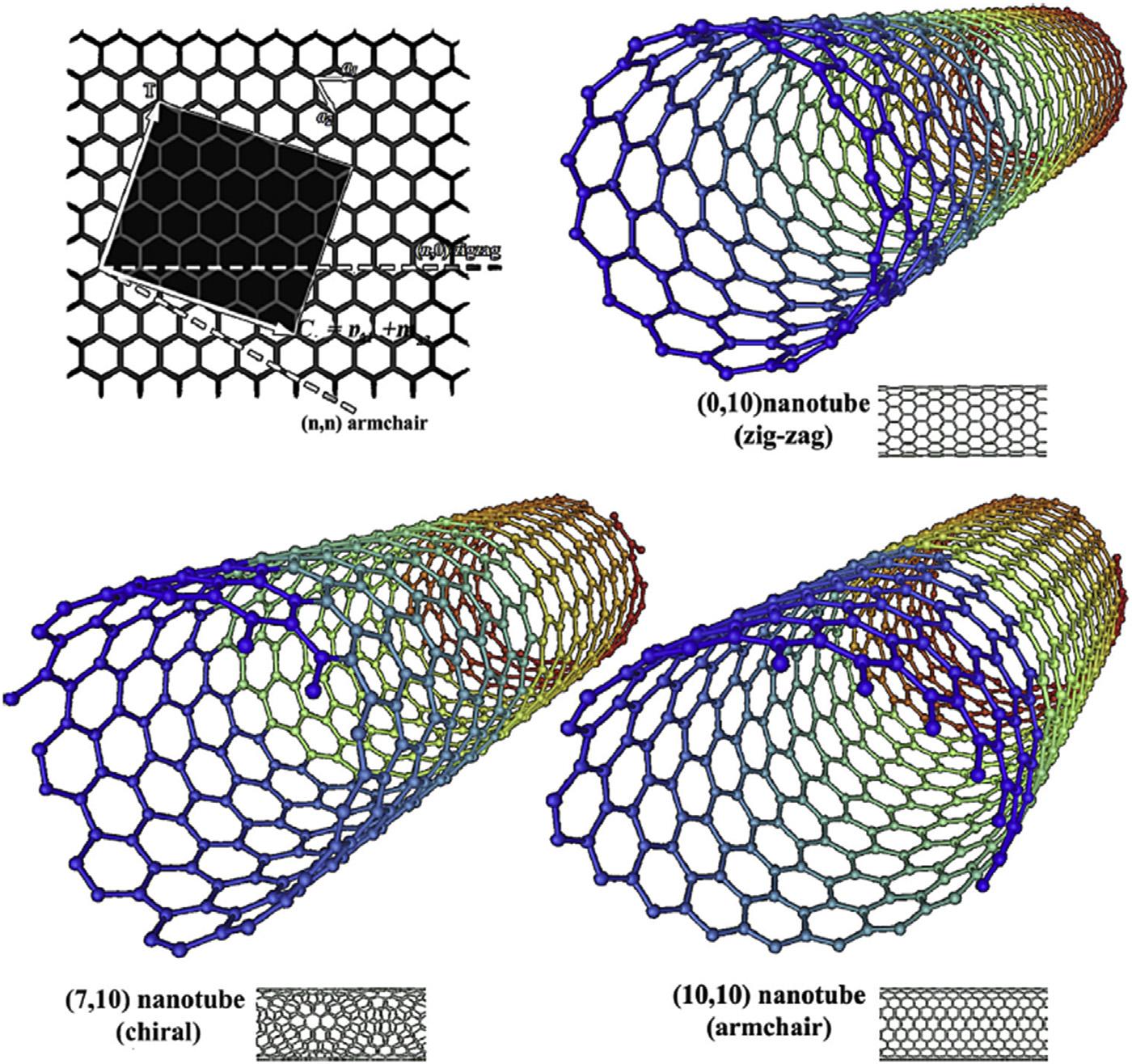
FIGURE6.9 MolecularmodelsofexhibitedbySWNTsbasedonthechirality:armchair,zigzag,andchiralbasedconformation[107].

FIGURE6.10 ElectronicmicroscopeimagesofdifferentCNTs:(A)TEMimageofSWCNTbundle;(B)SEMimageof entangledMWCNTagglomerates[127];(C)Fourtypesofadsorptionsitesofcarbonnanotubes[128].
Internalsites:thesesitesarefoundwithinthe hollowstructureoftubesandavailableonly whenendsofthetubeareopen.Interstitialchannels:thesesitesareeasilyaccessibleforthe adsorbatespeciesandfoundintheinteriorspace ofthebundlebetweenindividualnanotubes. Externalgrooves:thegroovespresentontheperipheryofananotubebundleandtheexterior surfaceoftheoutermostnanotubes,wheretwo adjacentparalleltubesmeet.Exposedsurface siteoroutsidesurface:outsidesurfacesiteis highlyaccessiblefortheadsorbate(externalsurfaceadsorption)andfoundonthecurvedsurfaceofindividualnanotubesontheoutsidethe nanotubebundles[131,132].
2.4Carbonnanofiber
Carbonnanofiber(CNF)was firstreportedina patent filedmorethan120yearsago;carbon filamentsaregrownfromcarbon-containinggases usingametalliccrucible.In1991,Iijima[106] foundcarbonnanotubesandotherfullerenesduringarcdischarge,whichtriggeredanoutburstof interestincarbonnanotubeandnanofiber.Nanometerscalecarbon fibers(carbonnanofibers) showhighsurfacearea-to-volumeratio,nanoscalediameterandmechanicalproperties,allof whichareofgreatpotentialapplicationinmaterialsscience,compositeproduction,energystorageandthechemicalindustry.Thehydrocarbon
gasesandpolymersarewidelyemployedascarbonprecursorsfortheproductionofcarbonnanofibers[133 135].Synthesisroutesofcarbon nanofiberaremainlyCVD,electrospinning,and templating.Thecarbonnanofibersderivedfrom differentroutesembodydifferentcarbonstructuresandmorphologies[136].
TheCVDmethodisnotpreparedfroma fibrousprecursor,butratherfromhydrocarbon gas,usingacatalyticgrowthprocess,involving acomplicatedchemicalandphysicalprocess;ultrafinetransitionmetalparticles,suchasironor nickelparticleswithdiameterlessthan10nm, aredispersedonaceramicsubstrate,andahydrocarbon,suchas,benzenedilutedwithhydrogen gas,isintroducedatatemperatureofabout 1100 C.Hydrocarbondecompositiontakesplace onthecatalyticparticle,leadingtocontinuous carbonuptakebythecatalyticparticleand continuousoutputbytheparticlesofwellorganizedtubular fi lamentsofhexagonalsp2carbon.Thus,theassociatedcostsareinevitably high.TheCVDmethodisonlycapableofproducingrelativelyshort fi bersthataredif fi cult toalign,assemble,andprocessintoapplications.CNFsfromvapor-growthcarbonnanofi bershaveaveryspecialstructurelike annular-rings;thenano fi bergrowthandstructureareshownin Fig.6.11 .Theadvantageof vapor-growthcarbonnano fi berstructureis sp 2 graphite.Thethicknessofthe fi berscanbe FIGURE6.11
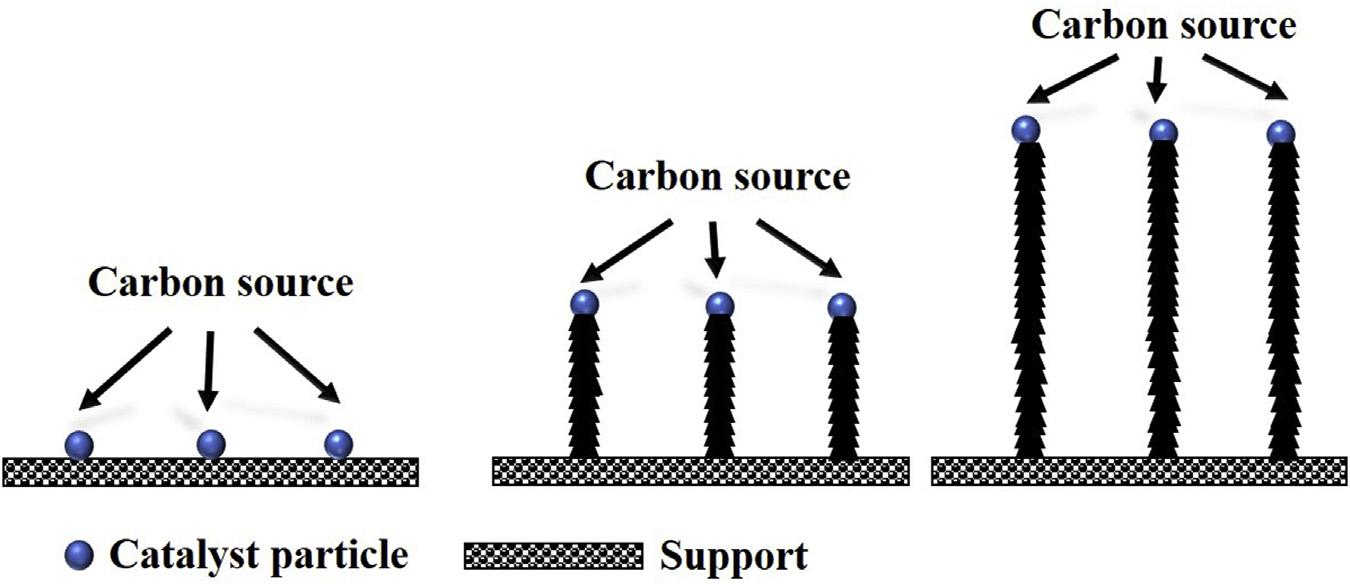
2.Propertiesofcarbon-basednanomaterials
adjustedbythemetalparticlesizeandthe orientationofthegraphiteplanecanbesteered bythegrowthtemperatureand/orthenature ofthemetal,suchas,iron,whichtendstogive toparallel fi ber,whilenickeloftenleadsto fi shbone-type fi bers.However,itrequiredthe carbonprecursorstobegasorlowboilingpoint organicmolecules,hightemperature,andthe presenceofnanometalparticles,orelse,the yieldofnano fi berislower[ 136].
Electrospinningisaneffectivetechniqueto producepolymericnanofibers.Therapidlydevelopingtechniqueofelectrospinningprovidesa straightforwardandcost-effectiveapproachto produce fiberswithdiametersrangingfromsubmicronstonanometerswithdiametersofapproximately300nm.Itoffersmanyopportunitiesto tailorthe fibermorphology,chemicalcomposition, fibrousarchitecture,andfunctionality.Duringelectrospinning,apolymersolutionis stretchedunderahighelectricalvoltageinto fine filaments,whichdepositrandomlyonan electrodecollectorformingarandomlyoriented nanofiberweb.Atypicalelectrospinningsetup consistsofametallicspinneret,asyringepump, ahigh-voltagepowersupply,andagrounded collectorinahumidity-controlledchamber (Fig.6.12).Apolymersolution,polymermelt,or
asol-gelsolutioniscontinuouslypumpedthrough thespinneretataconstantrate,whileahighvoltagegradientisappliedbetweenthespinneret tipandthecollectorsubstrate.Thesolventcontinuouslyandrapidlyevaporates,whilethejet streamiswhippedandstretchedbyelectrostatic repulsionformingsolidifiedcontinuousnanofibers(diameters50 500nm)onthegroundedcollector.Improvedelectrospinningtechniques havebeenabletoproducealignednanofiber arrays,nanofiberswithporoussurfaces,and bicomponentcross-sectionalconfigurations(e.g., coresheathandside-by-sidenanofibers),andto generatenanofibersonalargescale[137].
InadditiontoelectrospinningandCVDsynthesis,templatedsynthesiswithporoussubstratesandnanowiresprovidesalternative waysfortheproductionofCNFs.Forinstance, Xingetal.[138]demonstratedthetemplated synthesisofCNFsbyusinganodicaluminum oxide(AAO)membranesandcommercially availablecolloidalsilicananoparticles(SiNPs) ascotemplatesandphenolresinasacarbon source.Asindicatedin Fig.6.13,SiNPswere firstlyincorporatedintotheinnerwallofAAO membranetoformSi@AAO,andthenphenol resinwasaddedintothedualtemplatedfor carbonizationat973KunderN2 gas flowto
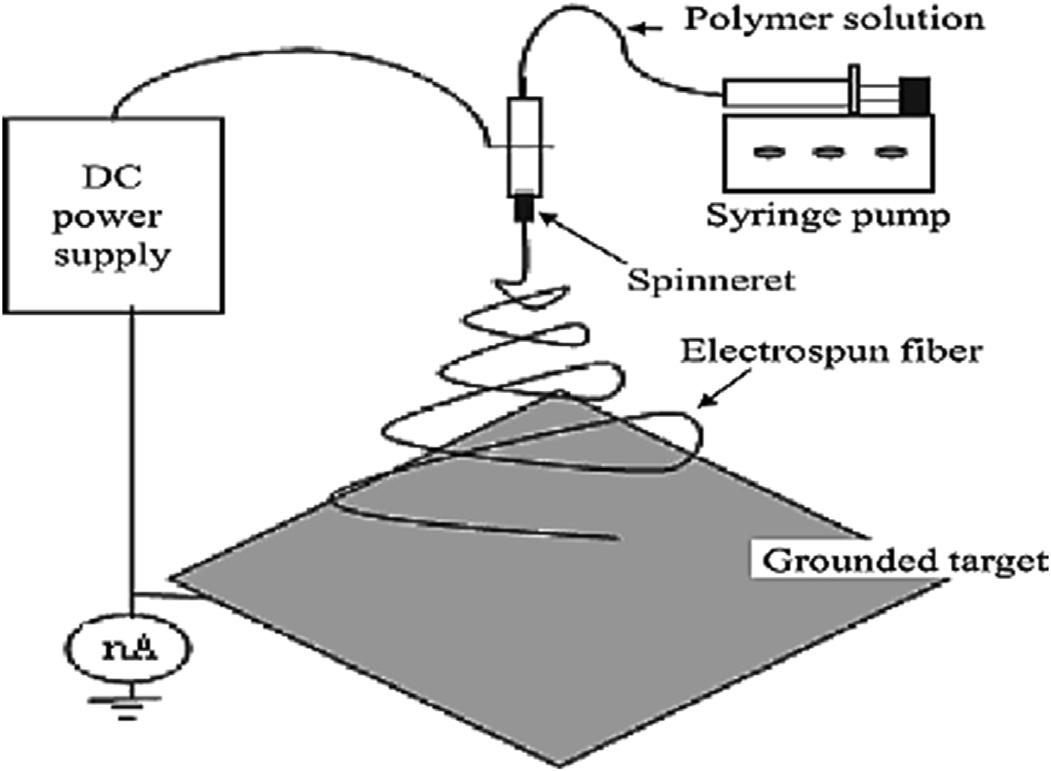
schemeoffundamentalsetupforelectrospinning[137].
Another random document with no related content on Scribd:
The perfection of human kind is such a state of mind and body, as their nature admits of, and as God has provided for them, in the ocean of his love, and treasures of his grace. The sum of our perfection is, that being saved from all our enemies, (that is sins, including all wrong tempers, as well as words, and actions,) we love God with all the powers of the soul, and serve him, with the whole capacity, of both our soul and body. And whoever has attained to this (which whoso denies the possibility of, rejects the counsel and word of God) is, a perfectman, according to the scripture; manifold infirmities, necessarily connected with a dying body notwithstanding.
*This servant of God had his infirmities, properly so called, which often made him weep in secret places. And yet, so powerfully did the grace of our Lord work in him, to the destruction of sin; and to such a degree of victory did he attain over himself, the world and Satan, that, to many, he seemed more than human; being in truth a man of another world, in whom dwelt richly the Spirit of the living God.
To such as were witnesses of his fervent zeal, mighty prayer, steady seriousness, and habitual heavenly-mindedness, I shall not wonder if all that follows, seems far short of a full description of him. And yet, I am aware on the other hand, that to many others, it may have all the air of mere ideal flight, or enthusiastic folly; to persons, who, cold themselves, think ardor comes from hell.
The deep, and genuine acquaintance with God, to which he attained, was in truth beyond that which the generality of Christians arrive at; although all are, without doubt, equally entitled thereto. He truly putofftheoldmanwithhisdeeds, and became renewedin thespirit ofhis mind. He fully experienced the significancy of those words, Sin shall not have dominion over you. And he that hath sufferedintheflesh,hathceasedfromsin. As also, yearedead:and hethatisdead,isfreedfrom sin. And from hence it was, that there appeared throughout his whole carriage, such fruit unto holiness. In him might be seen, how great things God doth for his children, who simply follow him, even in this world: no less than making them complete before him in love.
My first acquaintance with him, begun soon after the mercy of God had stirred me up, to seek his face. From a studious regard to the holy scriptures, it was soon given me to understand, what manner of person a Christian approved of God must be: and thenceforward, I both read, conversed, and thought of little else. And in him I saw clearly, what till then I had only conceived: in him my conceptions were truly exemplified. Much had been reported, both of the gifts and graces of Mr. Walsh; yet, I found in him, much more, than I had either conceived or heard. Nor did the long intimacy with him, with which I was afterwards privileged, alter, in the least my sentiments.
It might perhaps be thought tedious, minutely to describe all the particular graces, which adorned his life. And indeed to conceive of the excellencies which appeared in him, they need not be attended to, one by one; for neither so, could they be fully comprehended. But he walkedbeforeGod, in such a manner, as abundantly included them all. He was a person of a surprizing greatness of soul, for which the whole circumference of created good, was far, far too little: he found in God.
“That something still, which prompts th’ eternal sigh, For which we bear to live, nor fear to die.”
The love of Jesus, filled up in his soul, that mighty void, this whole creation leaves in human hearts.
His exactness in all those particulars, which comprize men’s duty to God, their neighbour and themselves, was such, and so well known, that it would be easy to swell this chapter, by enlarging on each of them, to an enormous size. But passing over the greater part of them, I shall only point out a few particulars, relating chiefly to his internal state, which were within my own notice: referring the reader, for a larger, and more satisfactory picture of him, to the following collection from his diary: in which are represented, those secret transactions of God upon his soul, to which himself alone could be privy.
The particulars I premise are,
I. HisPrayer.
From the earliest dawn of the grace of God in his soul, he was singularly remarkable for constancy and importunity in prayer. He was early a wrestler with God, and prevailed to the obtaining that eminency in the knowledge of God, for which he was apprehended in Christ, and which is here related in part. The more he got acquainted with divine things, the more did he increase in this soulenriching exercise. “He that has never prayed, can never conceive; and he that has prayed, as he ought, can never forget, how much is to be gained by prayer.”
Beside the daily, and often public pouring out of his soul, in general intercession, and occasional addresses to God, in behalf of needy souls (groaning under the guilt of sin, or body of corruption, or whatever was the cause) who often came to him for that purpose; he had his own stated times for approaching God in secret; in which it was far from sufficing, barely to present himself, and wait, whether in silence, or in discourse before the Lord. He accounted the work still to do, unless he felt his spirit affected with sentiments suitable to his condition; whether of holy mourning, self reprehension, recovery, or increase of peace and joy in the Holy Ghost, or some establishment in faith, meekness, patience, hope, or love.
Praying with allprayer, seemed the business of his life; for the doing of which, he waited neither for postures, times, or places. An heart so disposed, rendered holy to him, every thing of this kind, which may be said of places.
*Prostrate upon his face, kneeling, standing, walking, eating; in every posture, and in every place and condition, he was a man mighty in prayer. In sleep itself, to my certain knowledge, his soul went on (Canticlesv. 2.) in groans, and sighs, and tears to God. His heart having attained such a habit of tendency to its Lord, could then only give over, when it ceased to beat.
The enjoyments of the divine sweetness, which God imparted to him in secret, and the nearness of access to the divine Majesty, with which he was favoured, were indeed amazing. He has been sometimes, as it were, lost in glorious absence, on his knees, with his face heavenward, and arms clasped round his breast: in such composure, that scarce could one hear him so much as breathe.
His soul seemed absorbed in God, and enjoyed a calmness and transport, which can here, be well enough reconciled. From the serenity, and something resembling splendor, which appeared on his countenance, and in all his gestures afterwards, one might easily discover, what he had been about.
*It was especially towards the conclusion of his Lord’s work, that he was favoured with such near fellowship with him. He approached the throne of grace with much of the reverential boldness of faith, believing, that whatever he asked, he should have the petitions he asked for; the holy Spirit making intercession in his heart, according to the will of God. And to such a degree of confidence in him, did he arrive by this means, that in the greatest straits of his life (and he met with some things which came home to him, with the deepest sensibility) he was more than kept up; so that he seemed to fear nothing, even where, to all human apprehension, every thing was to be feared. He so abandoned himself to God, in the discharge of his duty, that his very friends were sometimes ready to charge him with being a little rash or imprudent. Altho’ he endeavoured to use his understanding as far as ever it would go; yet acting in view of those thingswhicharenotseen, and from motives referring to eternity, he was not, it is true, so attentive to the decorums among men, as mere human prudence would have dictated. And in reality it is a truth, which is learned from a series of experience, and confirmed by numberless examples, that whoever would do much for God, should take care of being (in a sense) too wise. There is reason to think, that if the apostles themselves had consulted the directions of bare human reason, they never had undertook the conversion of the world.
An habitual spirit of mortification served as wings to his prayer. And perhaps the want of this, is, much more than is commonly thought, a grand cause of that indisposedness to, and weariness in prayer, which is so generally complained of among Christians; many of whom are often even glad of a pretended occasion to avoid the duty. “Something is amiss in us, and it wanted a name, till the Spirit of God, by enjoining us the duty of mortification, hath taught us to know, that want of mortification of spirit, is the case of all, at least of many of our secret and spiritual indispositions. The excellencies of heaven cannot be discerned but by a spirit disrelishing the low appetites of the world. Unless our spirit be mortified, we neither love to pray, nor does God love to hear us.” We find all the way thro’ our heavenlyjourney, that to be carnallyminded, in the least degree, is a proportionable degree of death. And that a mind truly spiritual alone, has true life and peace.
It is hard to say positively which he was most remarkable for, the spirit or the gift of prayer, tho’ it need not be told which he most esteemed. His public character, made it right and necessary for him, to desire and endeavour after spiritual gifts. And the eminency to which he arrived therein in general, is too well known to need a particular relation. To hear him, on some occasions pour out his soul to God, made one often think, whence hath a man these things? Such a sluice of divine oratory ran thro’ the whole of his language on religious subjects, as is rarely to be met with. His public addresses to God, were commonly well nigh altogether, in the words of the Holy Ghost. *It seemed as tho’ he turned the whole bible into words of adoration, confession, petition, supplication, thanksgiving and glory: while at the same time his expressions glowed with the love of God: and all this with such ardour, intention, pertinency and faith, that it has seemed sometimes (one time in particular was peculiarly noticed) as tho’ the heavens were burst open, and God himself appeared in the congregation. Something of that Acts iv. 31. was often conceived while he prayed. But he made no account of this with regard to the perfection of his own soul. He made it his chief aim to follow after love, and to live in a momentary spirit of watchful prayer.
*He has sometimes had very remarkable answers to prayer. One only I shall mention. A number of religious societies both in England and Irelandappointed a public fast, for the imploring God, to restore to health an eminent servant of the church, who had been some time under languishment of body. Mr. Walshwas then in Dublin, and pouring out his soul about noon, he spoke aloud, in a manner which shewed it not to be of himself, and said he shall not die, but live, and declare the works of the Lord. And, blessed be God, the event shewed the prediction to be of God.
Towards the latter part of his progress, and before his last sickness in particular, his prayer had less of labour in it than formerly; and consisted for the most part, of a passive receiving the impressions of the divine Spirit: God acting rather in him, than he acted himself. And so still, and recollected did he frequently appear herein, that it was as if God was visibly before him, and that he spoke to the divine Majesty, with nearness of access, and child-like familiarity. Indeed every object and occurrence, spoke to him of God: nor could there be wanting to him, at any time or place, incentives to raise his heart in prayer or praise to him whom his soul loved.
One particular which he learned in the course of his experience, was, that altho’ the lights which are received from God in the way of prayer, are, of all others, to be most faithfully attended to; yet nevertheless, one ought not to act upon every appearance of this kind; that the enemy of man’s salvation can, and often does, mimick the Spirit of God; and as an angel of light, imposes upon the servants of God, by representing as from him, that which is often no other than Satan’s illusions, or our own imagination: on account of which, some persons have in most ages, been led into grievous mistakes, and improprieties of conduct. He perceived danger with regard to himself from this quarter, and was therefore very sparing in mentioning much of what he often felt. He weighed every thing by the word of God, avoided precipitancy of conduct, and making haste; and at the same time, laboured continually to abandon himself, as it were blindfold to the teaching of the Spirit of truth, and of purity.
II. Redeemingthetime.
In order to do this effectually, his manner was to draw up a plan in writing (till use made it familiar to him) of the manner, in which he judged it most profitable to spend the day. He distributed it into certain portions, and assigned to each its particular employment: allowing only for occasional interruptions in the business of his profession. Reading the scriptures, prayer, and visiting the sick, had the grand places in this division. He could never find any leisure for mere, ceremonious visits, or unnecessary conversation of any kind. Even at meals, and indeed in every little incidental matter he ceased not to pursue his main end of living: namely, to get, and to do good in his generation.
*It was really surprizing, to see his thriftiness in this particular. He even deprived himself of such indulgences as nature required, in order to her performing the offices he imposed upon her: such, for example, as abstaining from all study immediately after meals: when, notwithstanding he eat exceeding sparingly, more relaxation would have been better for his health: likewise, a sufficient quantity of proper exercise; but most of all, a sufficiency of sleep.
He was often up late at study, and his general time of rising was four o’clock, or a little after, sometimes between three and four. He was often urged to take more rest. I remember once to have heard a gentlewoman, compassionating the wasting, dying condition of his body, saying, “Sure Mr. Walsh, you may at least, lie longer in bed on Sunday morning, when the preaching is not so early.” To which he replied with his usual zeal and abrupt plainness, ‘Should a man rob God?’ He was commonly up earliest on the Lord’s-day, for which he had the highest veneration. He has sometimes said, he thought there was something peculiarly sacred in the very air, and the whole structure of nature on this day.
*During the long intimacy I had with him, I do not remember to have known him spend a minute in discourses about national occurrences, politics, or worldly diversions. He knew that these were not hisaffairs, and that his business was One. And the same may be said of what is called free and pleasant conversation. So provident was he of time, and so bent upon the pursuit of that “immense revenue which each moment pays,” that in whatsoever company he was, unless something relative to the one thing needful was discoursed of, he either took out a book (impolite as it may seem) or continued in profound silence, save when he answered a question. And if at any time any thing vain, or tending to levity was spoken, so as to occasion the least appearance of approbation in his looks or gesture, he severely reprehended himself for it afterwards, and prayed for strength for the time to come.
And yet notwithstanding all his caution, care, and diligence, he frequently lamented his not improving the time better, ‘I do not use every moment to the best purposes,’ was a frequent reflection with him against himself.
III. Disengagementfromtheworld.
Although what has been said of him already, implies his just contempt of every earthly thing; yet his eminency therein, deserves to be taken some farther notice of. His indifferency to this world was such, as even bordered upon abhorrency; and the rather, as he could not but observe, what a gulph to souls it is; and how many are lost for ever through their undue attachment to it. He kept at the utmost distance from what worldly men most ardently court, and earnestly sought what they most abhor.
The vain things; riches, honours, and pleasures of this world, were too poor, for so generous a heart: he shewed the greatness of his soul, by despising all that was beneath it. He had the most generous contempt of money; esteeming it (unless to bestow on the poor, or procure a book sometimes) as the pebbles in the street.
He had a full reliance on the providence of God, and found a happiness therein, which infinitely surpassed all the enjoyments and treasures of the universe.
IV. Recollectionofspirit,andgovernmentofhisthoughts.
*His carriage, aspect, words, and the whole of his behaviour, spoke the solemnity and profound recollection of his soul. Nor can a stranger better conceive of him, in regard to this particular, than by forming to himself, an idea of a person returned from the happy dead, conversing with men. And it was nearly in this manner that some have expressed their surprize at him. A gentleman said to me one day, “I met Mr. Walshin the street, and I declare he seemed to me like a person returned from the other world.” So emaciated a countenance, such fixedness of thought, and serenity of deportment, as appeared in him, towards the conclusion of his race especially, were surprising in so young a man; and discovered a something, very different from the busy ways of men. One needed only to look on him to perceive that there was something in him more than common. And if as the son of Sirachsays, “A man may be known by his look, and one that has understanding may be perceived by the marking of his countenance,” they must be indeed, superficial observers, that could not discern in his very aspect the excellencies that dwelt within him. An air of wisdom and piety appeared in him continually. There seemed to be something peculiarly distinguishing in the very features of his countenance. Some have taken him to be little less than forty years of age, at the time he was but about five and twenty.
*His uniform composure was the rather to be noticed, as his life was not of the recluse, but of the popular kind. He had to do with multitudes; and, unless on special occasions, was seldom above six hours together out of company. It is true he seldom appeared in publick, unless to speak of the things of eternity, in some respect or other. But he was so shut in with God, that all places became alike to him; and he retained the same attention to God in the most thronged streets of London, as he could have had in the most sequestered wilderness. Curious sights, elegant furniture in shops or houses, magnificent buildings, fine shews, the ringing of bells, firing of guns, with every thing of this kind; were no more to him than the chirping of a sparrow, or the buzzing of a fly.
*To all which, the constant government which he had over his senses, greatly contributed. The difference of tastes, harmony of sounds, and whatever his eyes could behold, were as nothing to him. He was in this respect truly crucified to the world, and the world to him. Even in travelling through the most pleasant parts of the country, and in the pleasantest seasons, when the stupendous beauties of the creation, the spacious firmament, the verdure of the country, (nature’s loveliest universal robe;) the music of the groves, and all the joint beauties of nature, might have furnished him with delightful contemplation; yet he seemed insensible to the whole, enjoying a
“Paradise within him happier far!”
*When he at any time adverted to the works of God in the creation, he was delighted chiefly with the heavens, paved as it were, with those living fires, the spangled stars. But the use which he made of every thing, was to get more acquainted with God, and so
by this stupendous scaffolding
Creation’s golden steps to climb to him!
He was in truth loosed from earth’s inclosure, and from the contracted circle of the sun, his heart was set at large. Christ, and the scriptures, with things pertaining to them, were the only and uniform objects of his attention, and every thing, place or person, which did not serve to promote, in some degree, his knowledge and love of these, had with him the estimate of trivial and insignificant.
*And hence it was, that the presence of God became so exceeding familiar to him. He could not be content a moment without it. And hereby was he fitted likewise, for more glorious, and more frequent divine communications; of which he had not a few, in the course of his progress. Several times has he been quite lost to himself, and insensible of every thing about him, being left in the visions of God. Two instances in particular are related in his diary, in which he seemed as though he was out of the body for sometime. One day I remember going to visit a person who was ill, as soon he got to the stair case, being in his usual composure, “Did you see that light?” said he, with a sudden low voice. To which I answered partly with a sigh, having seen nothing. He said no more. But it was easy to discern in him the rest of that day and night, a very peculiar solemnity of soul.
In places of publick worship, he hardly ever saw any body, so as to distinguish them; and in every means of grace, his grand aim was, to find more of God within him. He waited for this in lively earnest composure; and thus approaching the Lord’s table in particular, he ate the flesh and drank the blood of the Son of God indeed. “My heart burned! Was in a flame! O what a fire of divine love was there!” were the frequent memorials which he left in his diary, after communicating those heavenly sweets, which often overflowed his soul at the altar, and spread their inundation over every other part of his holy living. His recollection carried itself into the midst of all his labours, in which he was still preserved, without dissipation, notwithstanding their multiplicity, and sometimes intricate nature. It was very usual with him to express what he felt of God, by the simile of fire, to which the operations of the Holy Ghostare frequently compared in scripture. He often felt in prayer, in preaching, and walking, a kind of scorching within him, from the love of God. And from the abundance of the heart, his mouth generally spoke. Words of life, and fire issued as it were out of his lips, which were no other than the sparks of a burning heart. And often he could hardly refrain from expressing the holy raptures of his soul out aloud; as, OholyGod! GloriousJehovah! BlessedJesus! Son ofthelivingGod! He used frequently to stand up and sing,
O love, how chearing is thy ray!
All pain before thy presence flies!
Care, anguish, sorrow melt away,
Where’er thy healing beams arise;
O Jesu, nothing may I see,
Nothing hear, feel, or think but thee!
Give to my eyes refreshing tears,
Give to my heart chase hallow’d fires,
Give to my soul with filial fears,
The love that all heaven’s host inspires:
That all my powers with all their might
In thy sole glory may unite!
There was at first an eagerness in his spirit for the success of his labours, but he in time became unanxious on the head, being taught of God, that having done his part, he should think no more about the matter, but still go on straight forward, keeping himself in repose with God: in imitation of the angels, who continually watch over the souls, which God hath given them in charge; but who lose nothing of their tranquility or happiness, even when their utmost care is unsuccessful.
And from hence partly, arose that extreme tenderness of conscience, which was so remarkable in him, and which gave him a constant holy jealousy over himself in every thing he did; so that not a word, motion, or a look, could escape him, unexamined or uncensured, if it deserved it; hence likewise it was, that he had so very peculiar a regard to all his words; speaking either to the purpose, that is, when occasion required him to speak, or not at all. And yet notwithstanding his utmost circumspection, he was deeply conscious, how far short he still came of that rectitude, and entire renovation becoming a person in fellowship with the God of unspotted holiness.
C H A P T E R ♦XII.
♦ “V.” replaced with “XII.”
Someparticularsrelatingtotheheadofhiscommunion withGod.
V.
HIS great rule was to imitate our Lord Jesus Christ, in the most perfect manner he could. The whole tenor of his conduct plainly discovered, that he sought nothing but God. There was in the chastity of his manners, a purity next to angelical; and a circumspection in his every step, which declared, that to him tolive wasChrist. He kept at the utmost distance from sensual indulgences of every kind. His senses were kept under the closest custody, and he examined his conscience almost continually. Nor could it be observed at any time, that he acted otherwise than within the rules of the utmost decency.
*He was a man of tears, and sighs, and groans. He wanted not indeed the joy of a good conscience; and knowing continually in whom he believed, he enjoyed the benefits resulting therefrom, and yet this notwithstanding, the whole of his Christian pilgrimage, was interspersed with much weeping. He seldom had a dry handkerchief a whole day together; his eyes being for the most part, in private especially, as opened fountains; and which did not cease to flow in the night season. How often have I known him water his pillow with those briny rivers! Sometimes lamenting his two great estrangement from his beloved; sometimes mourning for the mourners; but oftener than all, he was sick of love! Love to the Crucified!
To some indeed, there seemed in him something, at least bordering upon, an unyielding austerity of spirit: and so much is true, that with regard to men, and evil angels, he was undaunted, and courageous, as a lion, in the cause of God, and of a good conscience: yet, in other respects, he was a man of the keenest sensibility, and tenderest affections. He was in the presence of his invisible observer, pliant as melted wax, and cloathed with dove-like meekness. He was often, as it were, deluged in tears, prostrate before the footstool of his Lord’s majesty, and overwhelmed with a sense of his glory.
VII.
He was without affectation, a man of humility; not indeed so as to disown, or not to make use of the gifts and graces, with which God had endowed him: this would have been to lie against the truth; but notwithstanding all that he had, yet taking knowledge whence it came, he esteemed himself as nothing; but was truly diffident of, and heartily despised himself. And the only use which he made of the superior qualifications which God bestowed upon him, was to consider himself as obliged thereby, to devote himself more abundantly to the service of God, and of his neighbour. The praises of others served only to abase him, at the sight of his own nothingness. ‘Lord, I am vile! a worm! O deliver me from this evil man myself! Thou only art worthy,’ were the frequent expressions of his lips and pen. If any person, at any time, gave him but the smallest hint, by way of reproof, he received it either with silence, or thankfulness, according to the manner and occasion thereof. And supposing it to be a matter in which he was really without blame, yet the reproof was not lost upon him. He thereby took occasion, to enter more deeply into himself, making the strictest scrutiny into the whole of his tempers and behaviour. He often said to God on these occasions, ‘Lord, though thou knowest I am clear in this matter, yet, alas! How many things are there for which I stand reproved before thee! My God, I adore thee in this, which thou hast permitted.’ He often repeated as a lesson of instruction to himself, those words of Kempis, “Thou dust, learn to obey. Thou earth and clay, learn to demean thyself. Thou oughtest to be such a little child, that every body might trample thee under their feet in the streets.”
VIII.
There was the utmost steadiness in the whole of his religious conduct. The course of the sun, and the seasons, is not more regular, than were his successive exercises of prayer, meditation, preaching, and study; so that from knowing how he spent one day, may be gathered, his manner of spending whole months, or years; allowing only for the difference of circumstances and occasions. Thus it was in things pertaining to God, and his service; though at the same time, his attention to himself, his ease and conveniencies, was such, that some have accounted it not less than blame-worthy negligence: so truly did he live, not to himself, or the will of man, but to God.
The love of God was the fountain, whence issued forth those fruitful streams, which rendered his soul flourishing as the garden of the Lord, and extended their salutary influence all around, wherever he came. It was to this he reduced every thing. All his works were done in love, and therefore wrought in God. It was a debt he was ever paying, and from which he was never to be discharged.
‘My God, let me love thee! Jesus, Son of the living God, thou knowest that I love thee! O love divine, what hast thou done! O that all the world did but know thee! How would they then love thee, thou altogether lovely!’ To this effect he often breathed out the warm emotions of his heart: so deeply was he penetrated with the love of God his Saviour. He was always exceedingly pleased with, and frequently repeated those lines,
“Eternity too short to speak thy praise!
Or fathom thy profound of love to man!”
And again, without regarding their connexion; but overwhelmed with the thought of the dying love of Jesus, he would utter sometimes abruptly, and with astonishment,
“Sensations new in angel bosoms rise
Suspend their song; and make a pause in bliss.”
*Lastly, By faith I stand! was his concluding point, after all that God had done for him. And it was not unusual with him to say, on the closest examination of all he was, and all he did, “If Christ forsook me but for a moment, I should fall and perish after all.” Yes, it was from hisfullness he received all his good things, and with the dependent helplessness of an infant, he had recourse to him continually, for light, and strength, and love: for every thing in short, which he wanted. He could be happy only in conversation with him; delighted peculiarly in those parts of scripture which describe and endear him; and from the fulness of his whole soul, repeated often, God forbid that I should glory, save in the cross of my Lord Jesus Christ.Tohimthathathlovedus,andwashedusfromoursinsinhis ownblood,tohimbetheglory,bothnowandtoeternity!
*To sum up this head. He thought prayerto be more his business than any thing else in this world; and from the desire which he had to redeem the time, he employed great part of the night, as well as the day, in prayer, meditation, study, and labouring for the good of his neighbour. He was profoundly serious, and always recollected at home and abroad. He watched over every motion of his soul, keeping his thoughts in subjection to Christ continually. He proposed to himself themanChristJesus, as his great model and rule in every thing; imitating him especially, in the purity of his body, and in the chastity of his affections. Walking in deep humility before God, he was patient of reproof, nor ever retorted any thing, with heat or prejudice. There was a steadiness in his proceedings for God, and in reference to eternity, which not all the powers of earth and hell were able to interrupt. He ate but little, wept much, loved more, received all by faith; and rarely opened his mouth, but about heavenly things.
P A R T III.
C H A P T E R I.
AnextractfromMr . Thomas Walsh’sdiary,relatingchiefly, totheexperienceofhisownsoul,inhiscourseofwalking with God.
CONCERNING the extract which here follows, it may be premised, 1. That although there was the utmost uniformity in the whole series of his progress; nevertheless, few persons were so sensible of various alterations in spirit, with respect to the sensations of joy and sorrow; delight in God, and complainings for the want of it: owing in great measure to a singular tenderness of conscience; and the close attention which he had to all the movements of his inwardman; so that things which some overlook, or entirely disregard, were esteemed by him, with regard to himself at least, as capital defections, from the law of perfect liberty and love.
His diary consists of the feeling of his own heart, through every part of his Christian race, with scarce a single hour omitted. He always wrote down reflections upon himself, as either the pressure, or felicity of his soul at that time suggested; adding any spiritual observation, or maxim, which his own experience confirmed to him.
2. It will be easily discerned, that the peculiarity of his writing, is a certain sententious abruptness; owing in part to the genius of the Hebrew tongue, in which his latter studies wholly terminated. Though what most contributed thereto, was the rapid flow of his soul, on the subjects of which he either spoke or wrote, which raised him above attending to that accuracy, which writings, at least of a public nature require. In many places there is therefore a manifest deficiency, both as to words, particles and stops; in short, like the writings of the antients, without period or paragraph, in most places: so that liberty has been necessarily taken to add, retrench, or alter, sometimes a word, or sentence, to render the sense intelligible; though still retaining his sense entire.
3. The inserting the precise date of every day’s experience, is judged unnecessary. Moreover the experience of several days, sometimes distant from each other, (tho’ rarely above a week) are thrown into the same paragraph, for the sake of brevity. The series of particulars, as to the order of time, is related as they occurred; and every paragraph begins with the experience of a distant day.
The reader being advertised of these particulars, we proceed to the extract itself.
“At the close of this last day of the year, (1750, the year in which he began to preach) I examined myself how I had lived the past year? And could only say, I had not wickedly departed from my God; but was heartily ashamed that I had not glorified him better; resolving to watch for the time to come.”
*“I prayed to God for quietness, and humility of mind; and found assistance against ‘this evil man, myself.’ O for a heart constantly fixed on God! I was reproved this day in spirit for an idle word.”
“The Lord was with me all this day. I desire to be with the Lord continually, that my communion may be stronger with Jesus than ever. O, it is heaven upon earth to have Christ in ones heart. It is the beginning of the glory of God, to receive the lovely Jesus; and with him, the joy of the HolyGhost. O that I had the tongue of an angel to praise my Lord! Hasten Lord the glad hour when I shall see thee as thou art!”
“I preached this morning on the great and precious promises, Ezekiel xxxvi. My soul aspired to have them accomplished; for I feel the evil of my nature, and especially the evil heart of unbelief that is within me.”
“Friday, February 22. I preached this morning on Song of Solomon ii. 8. but was both dark and weak, having scarcely any power to explain any thing. O what a grief it is for one to preach, when he is left to himself, when the Lord is not his present strength and teacher! To preach consolation to others, and feel none himself! This exposes one to great temptation.”
“Saturday 23. My soul enjoyed sweet repose in the blood of the Lamb, while my heart was engaged in meditation on his dying love. O, where can we find an instance of such love, as that of God to men on Calvary! When the innocent died for a guilty world, to bring them to God!”
“Wednesday 27. I was not alive to God to-day. Unnecessary talk brought deadness upon my soul.”
“Great part of this day I lived as in heaven. Heaven was within me. God was in my soul. The influences of his Spirit wrought so powerfully upon me, that my joy was beyond expression. O the length and breadth, and height, of the love of God! Well may it be said to pass knowledge. The spiritual man may discern it, but cannot set it forth in the manner he feels it. Those words of Isaiah lxi. 10. lifted up my soul, as in a fiery chariot, above the fabric of this world. I willgreatlyrejoice in theLord,my soulshallbejoyfulin my God, for he hath cloathed me with the garments of salvation, he hath coveredmewiththerobeofrighteousness,asabridegroomdecketh himself with ointments, and as a bride adorneth herself with her jewels. I could say, that the Lord had so done for my soul. O what enemies are the children of men to their own souls? They deprive themselves of happiness here, and of eternal glory hereafter; imagining that earthly enjoyments are above what religion can afford. But alas! it is because they know not this religion which brings such happiness to the soul.”
*“O how sweet was Jesus to my soul. The rose for sweetness; the lillyfor whiteness; the apple-tree for fruitfulness; what are they all to thee! Entering into my closet, the moment I bowed my knee, the Lord poured down a blessing into my soul. O what a heaven upon earth did I experience for some moments! Tongue cannot express the goodness of God to my soul. O where shall I find words to praise? How am I lost in the ocean, of the immensity of thy mercy! Lord, I know not how to give thee thanks. Where to begin, I cannot tell. O my soul, fall into silent amazement! Let all I have, or am, drop into nothing!”
“March, Friday 8. This was a day of much temptation; but God, for my support and confirmation, was pleased to give me fresh manifestations of his love.”
“Reading and prayer to day, were of little comfort to me. If it were not that I find the abiding witness of the Spirit in my soul, my bondage would be very great. It is the goodness of God which preserves me in the faith. The enemies of my salvation are thrusting sore at me from day to day. Defend, and keep me, O my God, for Jesu’s sake.”
“In prayer, I saw the great difficulty of being a Christian in reality. There are many who eat their own bread, and wear their own apparel, and are willing to be called by the name of Jesus, to take away their reproach—The abomination of being called Heathens. But they love notwithstanding, the ways of death, and darkness, rather than light; and do what Heathens would not do. The ninety-first psalm was made a great blessing to me, the ninth verse especially.”
“This morning the Lord gave me language that I knew not of, raising my soul to him, in a wonderful manner. After preaching however in the evening, at my return to my room, I felt little life in my soul, but a Spirit of slothfulness. O what a poor creature! How incapable of thinking a good thought, or doing a truly good action! Sinful dust and ashes.”
Friday 22. In the morning I had an earnest desire to be dissolved, and to be with Christ. I wanted to see Jesus, who bore and suffered so much for me.”
“The 25th, my soul was very dull. I had a desire to pray, but could not, through the deadness of my heart, and wandering of my thoughts. This is a thing I have to complain of in general; namely, wandering in prayer, want of earnestness and fervour.”
“The 29th, I cannot say, that till three o’clock I had true communion with God. But then, the Lord clearly manifested himself to me.”
“1751.April6.I had not much of the presence of God, nor of the comfort of the Holy Ghost, yet my heart and my flesh cry out for the living God!”
“O what an aversion I had this morning to study, and following the Lamb! If it were not for promises which the gospel affords, I should be often brought into bondage: very often is my soul cast down and my spirit disquieted within me; so that I must needs utterly faint, if it was not that I firmly hope I shall yet praise God for the health of his countenance. I felt neither comfort nor power in preaching. O what a poor creature am I when left to myself! How dark of conception; how slow of heart and speech! It sometimes happens, that while I am thus writing down my condition, the Lord appears to my help: so it is now; for God has been pleased to manifest himself unto me! And O what a welcome guest! At his coming my reins and my heart rejoice; my troubles are done away; my soul is greatly refreshed; my faith strengthened; my hope confirmed, and my love encreased. Glory be to God most high!”
“God and his ways were sweet to my soul this morning. Great was the peace of my mind, and the joy which arose from considering what the Lord had done for my soul. O how did I long to be altogether like him, inrighteousness and true holiness! Throughout the day, I enjoyed sweet repose in the blood of the Lamb. In the evening I preached on 1Corinthiansi.30.And God did indeed pour of his gracious spirit into my soul. Truly we had a heaven upon earth! O that I had the tongue of an angel to glorify thee for all thy benefits!”
“ThursdayMay23.I was in great trouble, going to preaching this morning. My temptations were sore, and my trials exceeding great; occasioned partly, by the condition of some, who for a time ranwell, but are turned again to the flesh-pots of Egypt. While I preached however, on Psalmsxxiii.1.my Shepherdgave me to feed upon his hiddenmanna.”
*“I found it hard work to be wholly set apart for God this day. I preached comfort to others, but could lay hold on little of it myself.”
“I am often like a day in spring; the sun shining bright for a little while, and soon withdrawing again. The sun ofrighteousness often shines upon me, with his bright beams; but alas! the light is soon clouded, and the joy vanishes away. Yet still, blessed be God, my heart stands fast believing in the Lord. For I take it for granted, that the want of strong light and joy, no more argues want of faith, than the absence of unclouded day, argues no sun in the firmament.”
“An unusual fondness for company, brought deadness upon my soul. The vanities of the world importunately intruded upon me. If God were not on my side, I should have been long ago as Sodom, and likeuntoGomorrah. Such vanities crouded in upon me at prayer, that even I forgot what I was saying. I am a man sorely distressed with the wandering of my heart. I arose from prayer and read, and prayed again. The Lord at length met me, and instantly released me from my sorrow, and gave me power to wait upon him without distraction.”
“Saturday June12.Great was the comfort which I had in God. I had the full assurance of faith, that God was my God, and Christ my Saviour. O the happiness of knowing this!”
“Tuesday28.I was deeply convinced of my depravity. O my God, I see the impurity of my heart in such a manner as frightens me. I know that Christ can have no communion with Belial; neither righteousness with unrighteousness. Lord break not the bruised reed, nor quench the smoaking flax. Rather send down thy Holy Spirit, and set me free from the power of indwelling sin. Consume it O God. Cast out the spirit of uncleanness for Christ’s sake.”
“This afternoon I walked in the fields, and had a sweet meeting with my Lord. He gave me his love.”
“Sunday morning. I was so stupid, that I could scarcely pray. Wandring thoughts crouded in upon me. O for an heart to pray. I find in general, that under the most afflictive trials, when I can in fervent prayer pour out my soul before the Lord, he gives me instant relief. But when I cannot pray, O then is my life burthensome to me; I cannot bear myself.”
“The word this morning, was sweet to the souls of the people. They seemed to drink of the fountain of the water of life. I had a glorious manifestation of the love of God to my soul. My delight surely is in the Lord, and his Son Jesus Christ. Thou art my God, my love, my joy, my help, my health, and my all in all! Blessed be thy name, Amen.”
“Too much given to talk; had not the usual longing after prayer and meditation. Yet the Lord helps mine infirmity.”
“I had great joy in my soul, and longing desires to be with Christ. O that even now, I could behold his lovely face, and amiable countenance!”
“Friday, July9th. I had a lively sense of the Lord’s having blotted out my former transgressions; and that he had promised to give me a cleanheart. I had great peace; my soul being filled with the love of God.”
“Saturday 10. Exercised this morning by false accusations. My only concern was, lest it should hinder the work of God. But in consideration of his over-ruling power and providence, I rested patiently on his will. My Jesus was made perfect through sufferings. O that I may be enabled to follow my master, in the way of the cross!”
Walking in a garden this day, God made it an Eden to my soul; pouring his love into my heart. I partook of the water and the tree of life: and the hidden manna was rained from heaven into my soul!
Monday19.All the day, my soul thirsted for the living God. I was transported, and exceedingly rejoiced in reading some divine meditations. O my God, What shall I say? Angels cannot praise thee worthily! What then shall I who am a worm of the earth do? O that I had wings like a dove? Lovely Jesus, when shall I see thy face, joining the rest of the redeemed, to celebrate the wonders of thy redeeming love! O that this were the moment! My soul shall ere long take its flight to the mansions, which I firmly believe my Saviour is preparing for me. O my God, my Saviour, my all!
“Thursday 25. I had but little light or power. The Lord humbled, and shewed me mine own weakness; but did not leave me to it. He shewed me clearly, that it was neither to my graces, humblings, desires, doings, or sufferings I must trust for happiness and salvation, but in Christ alone.”
“Ah, Lord, who is sufficient for these things! O let me die, that I may see thee! Whither is my beloved gone? Return Lord, return. I am a feeble and helpless creature. Yet rejoice not against me, O mine enemy; for though I fall into temptations, heaviness, and trials, I shall rise again. O proud Philistines, deceitful Delilahs, inbred sin, pride of heart, anger, and folly, who can remove you. Lord Jesus, thou canst, and thou alone.”
“At the sacrament, O how did my soul banquet in Jesus! What divine consolation did I feel in God my Saviour.”
“Wednesday 23.Tempted to laugh on my very knees, O Lord my God be my rock. Hide me in thy wounds, and deliver me from myself. O Jesus I cry out of the deeps, hear my prayer, and let my cry come up before thee!”
“Sure I am, that if my salvation depended on ought but the love of God my Saviour, I never should see the Lord. Alas I am all weakness, unbelief, disobedience, and darkness. My soul was weighed down with inbred sin. But I no sooner began to complain, and bewail myself before him, than he poured his love upon me, and gave me sweet access to him.”
“1752. January 6. I could hardly account to myself, how my thoughts had been employed this day. O that they were every moment taken up in the contemplation of thy wondrous love and compassion to me, and all the fallen race; O for an humble, lowly, simple, pure, and perfect mind! What shall I say to thee, thou delight of my heart? How much fairer art thou than the sons of men!”
*“When I look back upon my life I can see nothing that does not need to be washed with the blood of Christ. My best actions are imperfect I have need to fly to my Saviour, that from him I might receive that robe, which is pure and compleat. My whole desire is to be devoted to thee!”
“Ashamed, to lift my eyes up to heaven. I fell down before the Lord my maker; and I may well say that he waited to be gracious; for before I could utter many words his love filled my heart. I could then look up with confidence, and saw my Father God, smile upon me, and my dear Redeemer at his right hand full of grace and truth for me. O how sweetly did the ever blessed Trinity join to bless me! Help me to praise thee, O thou strength of Israel.”
“God was much with me in private. O what a heaven upon earth is it, to commune with him in prayer, holy reading, and divine meditation. Jesus is a well of life. How blessed is it to hold intimacy with him! This is paradiseindeed.”
“Sunday. It was a glorious sabbath to my soul.”
